Stewart Brand's Blog, page 2
August 30, 2023
The Three-Century Lifespan of the Modern Bee

Two London men explore an assembly of log cabins beneath the South American sun, armed to the teeth with nets and pins. It is the summer of 01845 in the heart of “British Guiana” — a colonized name and government that no longer exists, though the land remains and will remain until all names for it have been forgotten — and the air is alive with the smell of flowers and the hum of insects. For two centuries, Europeans have pillaged this land for all manner of riches: sugarcane and tobacco, coffee and cotton, raised on plantations and tended by the dispossessed indigenous populations and enslaved peoples brought here from Africa.
These two men have also come to take something, though they do so in the name of Western science. Emissaries of the burgeoning discipline of entomology, they stalk the highlands for the huge, black bees whose iridescent wings shimmer like panes of rainbow glass in the tropical sunlight.
Each specimen is gathered, mounted, and labeled with the utmost care. Handwritten tags with the date and locality are added: one man misspells a nearby indigenous landmark, while the other indicates that the pair are just a mile southeast of the larger settlement of Packertown. (Today, in 02023, there are no surviving historical records of this place.) Then, they add their own, unique data. On the back of a pamphlet detailing upcoming passenger ships to the ports, the younger entomologist records the behavior he observes. Almost like a haiku, he writes:
“In barn
at dusk, flying
noisily”
On another, he indicates, “Plucked from cotton, alive, but weak”, and on the third, “hoovering [sic] near roofing boards”. Almost every bee has a unique note, scribbled on a torn corner of a schedule, a newspaper, or the back of the date tag. In two hundred years, we will look back on these records as some of the earliest attempts at insect ethology — the study of behavior — which tell us more about the world and perspective of the entomologists of the 01800s than about the bees they captured.
His companion is equally rigorous, but in a different way. Rather than recording behavior, he scrawls as much minute detail as possible into his tiny scrap, until every bee has a label that reads something similar to “On porterweed flower about 2 meter high on the bank of a creek about 2½ km. southeast of Packertown.” (Typewriters have not yet emerged into common use, but sometime in the early 01900s a student of his student will retype these notes on more durable cardstock.) Four decades from now, detailed accounts such as these will help scientists describe the unique relationship between plants and animals: pollination, the process by which seventy-five percent of flowering plants on the planet reproduce and proliferate. It will finally be understood that insects — treated solely as pests and pestilence-bearers for centuries — are paramount to keeping the world green.
These two will continue their research for several months before returning to London. The jewel of their collection is known to them as Xylocopa cajennae, a huge and magnificent species that will accumulate many other names across the centuries. But the bee itself remains unchanged. It sits, pinned and labeled, in a climate-controlled box, tiny flecks of golden pollen still stuck in the hairs of its abdomen from its morning forage in 01845.
Specimens like these are ghosts of time and space. They — and the people who collected them — have been dead for long over a century. They are suspended in timelessness, and yet not so different from their seventieth-generation descendents: if you watched the iridescent-winged black bees of Guyana today, you would see them alight upon the flowers of porterweed plants, two and a half kilometers southeast of where a busy settlement called Packertown once stood. Even as we fade, we can be assured that the insects will remain, flying noisily at dusk.
In a cluttered study in Maryland of the 01950s, a pair of entomologists — partners in marriage for twenty years, and partners in the field for twenty-five — keep their growing collection of pollinating insects. Many specimens are from their own time together during expeditions across North America, traveling almost nonstop throughout the summer months and filling case upon case with bees from the Appalachian highlands down to the tropical Mexican grassland. The rest of the insects — filling jumbled boxes and cabinets and spilling over the furniture — are inherited from relatives or gifts from colleagues. Their private collection rivals most academic institutions of the time, and spans centuries of entomological field research.
But while it may appear that these specimens are scattered mindlessly about the room, there is a method to this messiness; in their older years, they have started to collect less, and identify more. Together, they sort every bee in their collection, and add a new label to its pin: a determination label, stating the genus and species it belongs to, as well as the year of their decision. Some of these specimens already have tags from the 01920s, and many will receive new ones at the turn of the next century, when the children of this entomologist pair donate their inherited collection to a research institution and the boxes are reopened for the first time in decades.
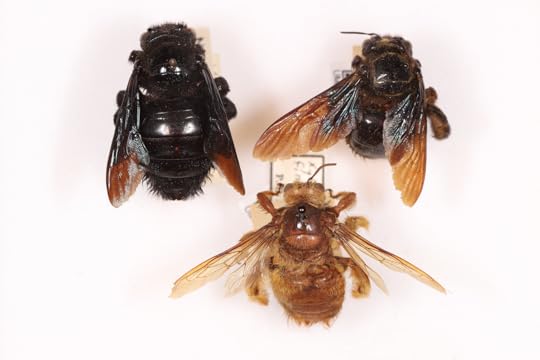 Three Xylocopa fimbriata specimens showcase the inter-species diversity that makes determination such a difficult artform. Photograph courtesy of the author, specimens courtesy of the University of Michigan Entomology Collections
Three Xylocopa fimbriata specimens showcase the inter-species diversity that makes determination such a difficult artform. Photograph courtesy of the author, specimens courtesy of the University of Michigan Entomology CollectionsFor now, however, these two are at the forefront of their field: insect taxonomy. Like all biologists, they use the Linnaean binomial system of species identification, but unlike Linnaeus, the entomologists of the 01950s have begun to realize that insects cannot be easily categorized by visual similarities alone. Nature journals are flooded with papers that consolidate two former “species” (typically the larger, solid-colored female and smaller, striped male) under the same name, split classifications apart to make room for new organisms to be described, or propose to discontinue a “synonym” — a redundant name for a species that has already been cataloged in Western scientific tradition. The backbone of this boom in taxonomy are collections such as this private Maryland cache, which allow comparison of dozens of individuals from countless insect species across the world. For the first time in history, entomologists can see the staggering, global diversity of insects laid out before their very eyes.
Among this couple’s most important specimens is a bee dated to 01845, labeled Xylocopa cajennae at the time of its collection, from a town they do not recognize in what is still known to them as British Guiana. They set it aside, and, gradually, other black-bodied bees with identical iridescent wings join it in its box. These have their own determination labels dating back several decades, reading: Xylocopa corniger, Megaxylocopa cornuta, Xylocopa fimbriata, and Xylocopa virescens. The entomologists study these specimens carefully. Though some are over a hundred years old, gentle treatment of these insects has kept their body segments, wings, and legs intact and comparable to contemporary individuals. Finally, after analyzing the location data recorded on their tags and the similarities of their morphology, the couple declares the collection to be of the same species. The oldest name — Xylocopa fimbriata — is given precedence; the rest are considered obsolete. In the spring, they publish their findings, alongside a proposition for a new species of American bumblebee: Terrestribombus magnus (by the year of 02014, this will be one of thirteen synonyms for Bombus cryptarum, a species first described in 01775.)
This married pair will publish together dozens of times more during their careers, and their students — women included, despite the hostility of the times — will continue their legacy of naming and renaming their collection, and when it passes into the ownership of a university, the cycle will continue. Science, like all knowledge, is mutable; our understanding of the world(s), ourselves, and the past and the future change every day. Specimens with multiple determination labels prove that our understanding of these creatures is a constant work in progress, evolving with our own ability to study them in increasingly detailed ways through global collaboration and collections, microscopic photography, genetic analysis. It is, in some ways, a representation of thousands of years of human history and curiosity, of the urge to collect and name all the things in the world. The preservation of individual specimens across the centuries allows us to share in that joy of discovery with those who precede us, and those who follow in our footsteps, fixing our names and perhaps creating some new ones of their own.
Technology makes things easier in 02023.
Our lab has a logbook by the door, with names dating back to the 01960s of visitors and their intentions (the research labs itself are far older than that, beginning in 01817 with the founding of the college.) Having one of the largest zoological collections in the world, international experts once traveled from across the globe to study and collaborate under our roof. Nowadays, if a Swiss ichthyologist wants to know the stomach contents of deep-sea fish from the University’s latest expedition, we can send them detailed lists and photos with the click of a button — no eight-hour flights required.
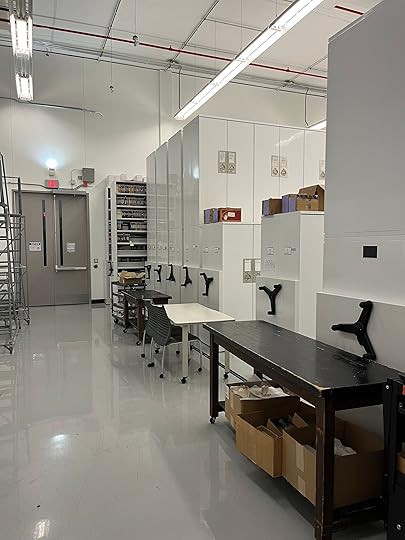
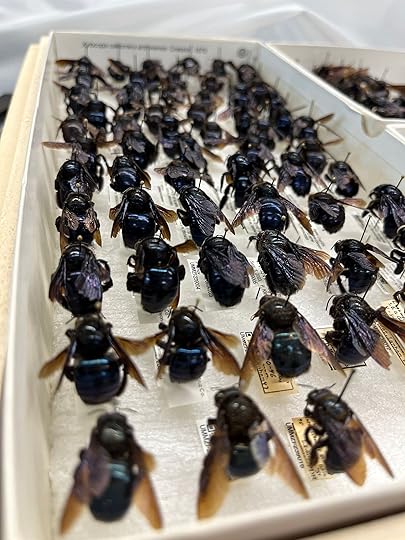 Photographs courtesy of the author, specimens courtesy of the University of Michigan Entomology Collections
Photographs courtesy of the author, specimens courtesy of the University of Michigan Entomology CollectionsBut still, this global collaboration is dependent on the preservation of our physical specimens, kept safe in boxes and cabinets and gathered together from across the continents and centuries. My work involves the digitization of these individuals, photographing them and transferring the jumbled, fading information from their tags into our online database. I have held in my hands the Xylocopa fimbriata that those London men collected in Guyana, pollen clinging to its hindlegs, the overhead lights reflecting from its shiny, black carapace. In the 01800s, this specimen — and the thousands of others in our collection — helped biologists unravel the mysteries of pollination. In the 01900s, entomologists recorded their names in our logbook as they visited from faraway colleges of their own, using those same insects to expand our understanding of taxonomy, phylogeny, and the natural world; the Xylocopa fimbriata still bears the mark of this surge in taxonomic interest, with multiple determination labels attached to its rusting pin. Sometimes we even find them scattered about, miscategorized or filed under archaic names. Part of my job is reuniting lost souls with their species, until a new determination splits them apart again.
For now, in the twenty-first century, these individuals are once again at the heart of research. Their digitization is paid for by a climate change grant, and our dorsolateral photography allows measurement of these bees’ intertegular distance, the space across their thorax and between their wings. As the planet warms and their habitats worsen, this distance shrinks, and their flight is impaired; we can see this change in action, thanks to the centuries-span of our collections — the Xylocopa fimbriata from 02010 look markedly different than those from decades past. With their locality tags, we can track the areas most at risk, and thanks to their determinations, we know which species are most in need of our help and protection. In a sense, these individuals are still very much alive, even two hundred years after their collection, because they are contributing to the continuation of their living descendents.
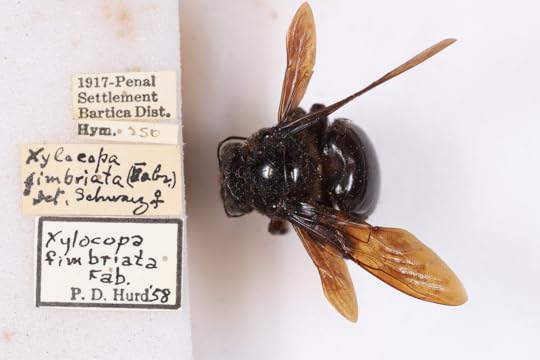 A dorsolateral photograph of a fimbriata specimen that helps scientists measure intertegular distance. Photograph courtesy of the author, specimens courtesy of the University of Michigan Entomology Collections
A dorsolateral photograph of a fimbriata specimen that helps scientists measure intertegular distance. Photograph courtesy of the author, specimens courtesy of the University of Michigan Entomology CollectionsThere is no doubt that advancements in imaging and field research will continue to diminish the need for pilgrimages to central collection centers such as ours, with hundreds of thousands of specimens from every domain of life. Across from me in the lab, my friend creates three-dimensional models of our most attractive specimens, practically replacing the need to look at any physical insect. But a model cannot have its genes mapped, or pollen and parasites removed from its delicate legs for studies on symbiosis. Just as the entomologists of 01845 had no idea their specimens would someday be used to track changes in the global climate, we don’t yet know what will become of our collections. Our role is to treat them with respect as we transfer a small piece of their essence to the digital space, and to ensure their preservation for the generations that follow us.
Our world is changing. Our pollinators are slowly changing, too. Our time on this world is short, both human and bee, passing through places that forget our names as their names are forgotten to us. It is through science that we are granted brief immortality, adding our knowledge to the common pool, writing our names on the labels of the specimens we gather and determine, and preserving ourselves as we preserve them. It is together, collector and collection, that our lifespans stretch for centuries.
August 23, 2023
The Commodification of Air
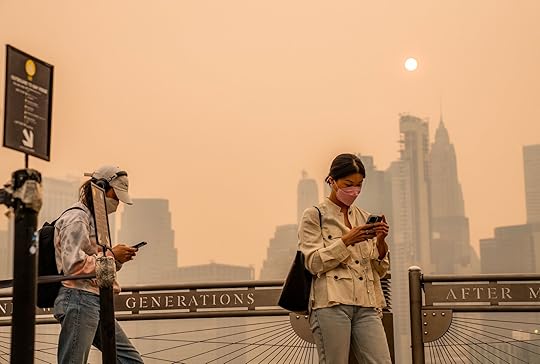
In the early 01990s, a team of eight scientists and researchers were hermetically sealed into a series of geodesic domes to live for two years. Motivated by a vision of the future in which we might fully simulate nature itself, Biosphere 2 (a humble successor to Biosphere 1, which is what the researchers called planet Earth) would aim to recreate a world in miniature: a complete ecosystem that would allow these econauts to exist in their glass cages in perpetuity. After a few months, however, the habitat became dangerous. Microbes in the soil were churning out CO2 at rates that the young plants couldn’t absorb. Asphyxiation was encroaching. Eventually, a truck had to come in and pump oxygen directly into the structure, breaking the experiment’s hermetic seal and reintegrating it with the broader world — an emergency measure taken after the resident doctor began to struggle with the simple task of adding a column of numbers together.
Though this surreal excursion into the limits of environmental simulation might initially appear far-fetched, it is in many ways a synecdoche for our contemporary relationship to the built and natural world. We’ve long been attempting to craft our own personalized biospheres. From our air-conditioned, seat-warming cars to our massive office buildings with secured windows and central air, we’ve created a comprehensive range of self-contained habitats designed to be immune to outside conditions, capable of being regulated and manipulated at will. The sociologist Jean Baudrillard sensed this fact when, writing on the project, he claimed that “when you leave this virtual biosphere to go back into the real, you notice that the whole of American society is already living in the same conditions… of the biosphere module.” This simulacral logic would be readily adopted by neoliberal capitalism as companies looking for new avenues of profit would begin to productize these simulated environments — transforming the very air we breathed into a manufactured, commodified good.
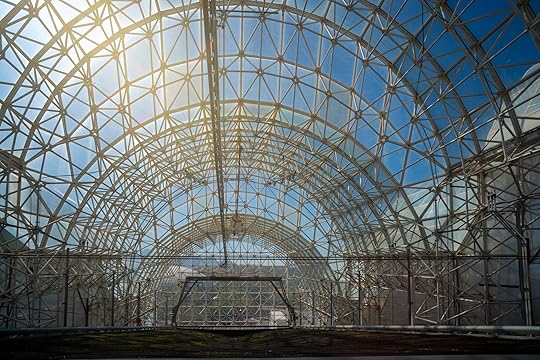 The glass domes of Biosphere 2 created an illusion of environmental self-sufficiency belied by its own equipment failures. Photo courtesy of Christopher Michel
The glass domes of Biosphere 2 created an illusion of environmental self-sufficiency belied by its own equipment failures. Photo courtesy of Christopher MichelThis gradual transformation of air into a commodity has accelerated in recent years as ongoing pandemics and climatic catastrophes have continued to shape our relationship to wellness and health. As science writer Eleanor Cummins observes, we’ve seen people increasingly turning to “air purifiers and skincare products to address air pollution,” adhering to the gospel of consumerism to reckon with ecological disaster. These days, the air purifier industry alone is estimated to be worth nearly $14 billion and is set to grow; as one 02022 report states, “more than 40% of Americans (over 137 million people) live in areas with failing grades for harmful levels of particle pollution or ozone. This equates to 2.1 million more individuals breathing polluted air than the previous year.” In short, the market opportunity is expanding.
At the core of this phenomenon — beyond all the avarice and opportunism that might surround it — lies the biospheric belief that if we put up enough walls between ourselves, we’ll be able to realize a totally safe, self-insulated ecosystem. Yet the failures of the Biosphere 2 project reveal that enclosure and privatization will lead to suffocation. There is no salvation to be found in this “gated community for one,” as the political art group The Yes Men put it; there will be no oxygen truck to save us when things go awry. Instead, we need to resist this transformation before it's too late — to enshrine air as an elemental right that cannot be bought or sold. Doing so is the only way that we might avoid breathless ruin.
Although this commodification of air may have been brought to popular attention by recent global events like the COVID-19 pandemic, its cultural roots invoke a history that reaches back millennia. The desire to escape bad air goes as far back as the ancient Greeks, when miasma theory would link our notions of air and health — a connection that runs so deep that even our word for malaria stems from the Italian “mala” (bad) and “aria” (air). Likewise, the aristocracy have an extensive tradition of going to the countryside as a way to escape city fumes and bask in the fresh air. During the 01900s however, air — like the “commons” before it — would retreat into the walled enclosures of private property, replaying the propertarian maneuvers of the preceding centuries in this new domain. Two intersecting developments in particular would help establish the foundations for our modern privatized relationship to air: the technological realization of artificial environments, and the gradual transformation of natural air into contaminated air.
Historically, artificial climates were the purview of science fiction, a thought experiment exploring what it would mean for us to transcend our primitive, natural state and have complete authority over the environment. Modern instances include the hedonistic spaceships of WALL-E or the microcosmic train in Snowpiercer, but its origins in the genre go much far back. In the early machine age, for example, the underworld became a popular trope in futurist imagery — a space “where the organic is displaced by the inorganic, where the environment is deliberately manufactured by human beings rather than spontaneously created by nonhuman processes,” as Rosalind Williams writes. In the 20th century, technological developments would enable this fantasy to slowly creep into reality. Apparatuses like air conditioning would first actualize the idea of a “totally artificial indoor environment, independent of the natural climate,” as Gail Cooper writes in Air-conditioning America. Buildings — once largely seen as semi-permeable membranes in which air from the outside would freely pass through to the inside — became insulated boxes, technologized sites of control. The open windows letting in the breeze would be sealed shut in favor of cool, man-made air. These developments would culminate in experiments like Biosphere 2, which attempted to sublimate every aspect of the environment into a synthetic superstructure. Air could now be something created by these tools on-demand, a product delivered on tap.
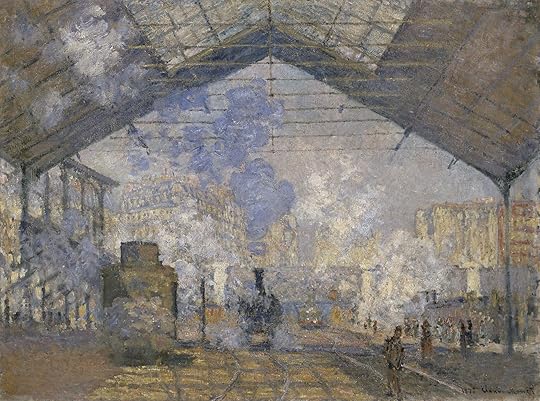 In Claude Monet's paintings of Saint-Lazare Station in Paris, the dark smoke of coal-powered trains overtakes the sky and the built environment.
In Claude Monet's paintings of Saint-Lazare Station in Paris, the dark smoke of coal-powered trains overtakes the sky and the built environment.At the same time, our relationship with shared natural air was changing in the wake of mass industrialization. Consider Monet’s famous Gare Saint-Lazare series, painted in the late 19th century. Notice the billowing train smoke that overtakes the sky behind it. In these paintings, cloudscapes, once a marker of the natural sublime, have become a marker of the technological — reflecting the growing awareness that even the skies were now impacted by our works. While this sort of man-made smoke was initially considered relatively clean (since miasma had historically been associated with decaying biological matter), artificial fumes became an increasing point of concern for the general populace throughout the 19th and 20th centuries as they began to be associated with an array of health issues.
The air and skies continued to take on an increasingly dark, deadly character in the decades to come. World War I introduced mustard gas into the arsenal of war, turning the environment itself into a weapon. As Peter Sloterdijk writes in Terror From The Air, with “gas warfare, the fact of the living organism's immersion in a breathable milieu arrives at the level of formal representation” — it becomes a fact that is both manipulable and strategically leverageable. World War II and the development of the atomic bomb spread irradiated particles into the atmosphere, which would linger for years to come. Meanwhile, the Holocaust would forever reveal the genocidal possibilities of gas, transforming it into an agent of death on an industrial scale. Today, we’re continuing this legacy of loss. Year after year, wildfires deposit smoke across the globe, new particles like aerosolized microplastics are found in the air, and noxious black clouds emerge from chemical disaster sites.
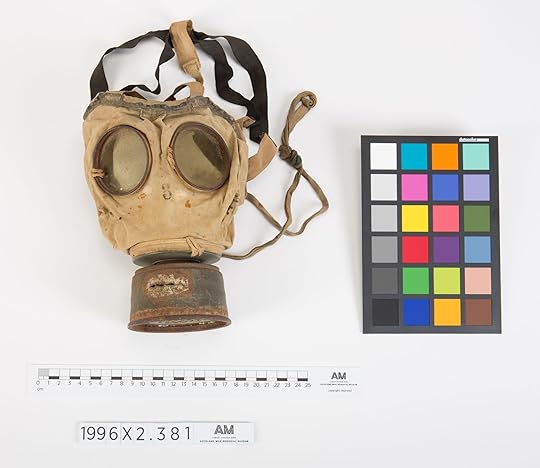 The advent of airborne chemical weapons in the First World War set the tone for a century of noxious, amorphous threats from the air.
The advent of airborne chemical weapons in the First World War set the tone for a century of noxious, amorphous threats from the air. These two intertwined histories of technological development and environmental loss would propel each other forward. As our notions of “natural,” clean, public air slowly unraveled, we’d begin to fetishize the emergent possibilities of artificial, private air. Tellingly, the techniques that we associate with our modern synthetic ecosystems often originate as a direct response to our pollutive history. As Sloterdijk notes, the gas masks introduced in WWI were the “first step towards the principle of air conditioning, whose basic idea consists in disconnecting a defined volume of space from the surrounding air,” in creating a private ecosystem separate from the public one. Later on, HEPA filters — which have become the gold standard for commercial air filters — were developed to be used alongside the Manhattan Project in an attempt to filter out irradiated particles. Only the air that we made ourselves could be trusted in this increasingly toxic landscape. In the summer of 02023, smoke from devastating forest fires in Canada swept into New York, transforming the sky into a raging red haze. Amidst an air quality alert, the government encouraged us to build our own “clean rooms” — spaces sealed from the outside and filled with ACs and air purifiers. The biospheric message was clear: public air is lost; it’s every man for himself.
Clean air has become scarce — and where there is scarcity, there is demand. The technological advancements over the past century would allow companies to turn air (that once immaterial, ungraspable thing) into a man-made product that could be sold to meet this demand. The insulating logic of the biosphere — the air-conditioned techno-culture that arose in conjunction with ecological corruption — was tailor-made for neoliberal capitalism. The view that the environment is something that can be personalized resulted in the belief that a healthy and sustainable milieu was merely a matter of personal choice, something for the individual to solve through consumption. Air was no longer a public matter that institutions were responsible for, but rather just another good subject to market forces, a question to be settled between private industry and individual consumers. If we lacked clean air, then it’s because we simply didn’t want it enough, or work hard enough to afford it. By framing air quality as a private concern, conservative governments were free to continue their campaign of deregulation and create a new market that companies could rush in to fill.
All across the globe, we’re witnessing the long-tailed impact of this approach. Akanksha Singh reporting for Wired notes the growing “pay-to-breathe” economy among the upper and middle classes in India — where air-filtered homes, malls, and cars are beginning to transform clean air into something experienced only by the wealthy. In the US, there was a spike in air filter sales that occurred at the start of the pandemic, and continuing ecological crises are feeding this consumerist impulse. Even ridiculous products like the Dyson Zone — an air filtering headphone that was initially panned by critics — are gaining new hype in the wake of wildfire season. Meanwhile, companies like Vitality Air are literally bottling up fresh air to sell as a luxury good under the guise of environmental justice (“everyone should be entitled to fresh clean air,” they write magnanimously before selling bottles for upwards of $10,000).
Critically, the commodification of air doesn’t just stop at the sale of filtering technologies or bottles of air. We can see it at work in policy as well. Take the idea of “carbon offsets,” which allow companies to buy certificates associated with climate change harm reduction rather than actually reduce their own CO2 production. In effect, this transforms air into a fungible, unitized good that can be traded in the global market. It imagines air as something that can be packaged, quantified, and redistributed — treating the “good air” produced by offset providers as a discrete object that can be sold to corporations in order to negate the effects of the “bad air” that they are emitting. By purchasing these eco-indulgences, companies can spend their way to absolution instead of actually transforming themselves. Given the logic of the market, however, there’s little incentive for either company or creditor to be particularly meticulous when it comes to actual harm reduction. After all, since the air itself can’t be exchanged, the moment of value creation occurs when money is exchanged for credit (when corporations can say they’ve done their due diligence and when providers get compensated), rendering the real planting of trees or the prevention of deforestation a secondary concern. This helps explain why up to 90% of offsets from the leading carbon standard Verra were recently discovered to be worthless. An attempt to subject air to trade in this manner only results in its further loss.
 Companies like Vitality Air have made air into a consumer good, selling the promise of "clean air" for thousands of dollars.
Companies like Vitality Air have made air into a consumer good, selling the promise of "clean air" for thousands of dollars.This individualist, consumerist attitude will only exacerbate the inequalities currently plaguing us. Air is already far “from equal across the planet,” as the cultural geographer Peter Adey puts it, and existing socio-economic infrastructures have long prevented its equal distribution. In the US, decades of residential segregation have made it so that Black Americans are disproportionately exposed to pollution. Commodifying air will disenfranchise those who need it the most, which is all the more concerning because bad air has the capacity to reinforce racialized notions of “cleanliness” and “purity.” In the not-so-distant past, polluted air was closely linked to fears of “racial degeneration” according to the historian Peter Thorsheim; American slavers once attempted to propagate the narrative that Black bodies were naturally immune to yellow fever in order to justify subjecting them (and not white laborers) to lethal conditions. There’s a real risk that we will blame the victims of environmental injustice for the hazardous conditions they find themselves in, intensifying the vicious cycle that runs between misplaced responsibility and social neglect.
At a global level, this commodification also has a tendency to feed into a subtle form of neo-colonialism insofar as it involves countries in the Global North “offsetting” their activities by dictating land and resource management in the Global South, distributing responsibility in ways that hinder the latter’s economic potential. As Ariel Cohen bluntly writes in Forbes, “expecting the global south to play an equal role in decarbonization when they have unequal means is to curse it.” Looking forward, it’s strikingly clear that we cannot rely on more “markets” and private biospheres to address the challenges facing us — they are too short-sighted, too narrow, too self-interested to equip us with the tools we’ll need to pioneer a more equitable future.
Shortly after wildfire smoke descended on New York in early June, searches for “sell my house fast” spiked. In many ways, it emblematized the misguided, unimaginative state of our culture today — a refusal to acknowledge our interconnectedness, a desire to retreat into our isolated silos. The frightening truth, however, is that there’s nowhere to run. No matter how fast you sell your house or how many filters you set up in your apartment, the “slow violence” of ecological collapse is destined to catch up. If we’re to avoid catastrophe, we must relearn how to “breathe together,” as STS scholar Timothy Choy writes. There is no singular solution to this global issue. Rather, we’ll need to pursue interventions at every level of organization.
Interpersonal webs of empathy and support will be critical to developing any resilient ecology capable of absorbing the shocks to come. Victoria Nguyen, for example, writes on the grassroots “respiratory publics” being formed in Beijing — where practices like the online image-sharing of smog levels, care-based circulation of face masks, and utilization of publicly accessible “respiratory refuges” like community centers are creating a bottom-up response to local atmospheric conditions. Through these “publics” (which can range from the practices that Nguyen observes, to forums that disseminate instructions on DIY filters, to “buy nothing” groups that share resources like purifiers in times of need) air can become a shared “object of concern and daily intervention” for the community at hand. The COVID-19 pandemic only served to reinforce the importance of community-level initiatives and personal practice when dealing with such aerosolized threats.
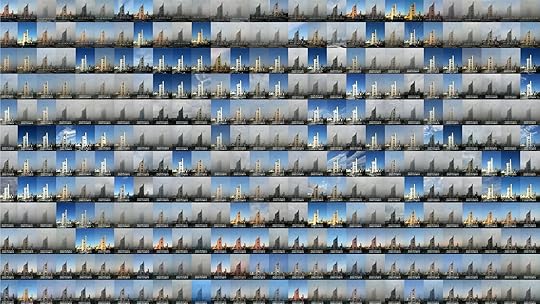 Zou Yi's images of 9 months of Beijing air quality. Courtesy of Zou Yi.
Zou Yi's images of 9 months of Beijing air quality. Courtesy of Zou Yi.Large-scale, top-down initiatives will also be necessary if we are to reclaim public air. This includes not only the tighter regulation of industry and the implementation of environmental protection laws, but also new technological and legal architectures that will help us realize air as a shared medium of life. NASA, for instance, is working to create a more detailed portrait of air quality in the US through the deployment of satellites that can supplement ground-level observation systems. A highly sophisticated level of monitoring will be the first step in making the air epistemically tangible in an active, actionable sense — allowing us to identify the areas most in need of additional resources and initiatives in real time. Policies can also help enshrine clean air as a human right (a broad claim that the UN recently made, but which we should hope to eventually see reflected in practice). There are laws in New York City that require building owners to provide heat and hot water to their tenants — what would it mean to extend this to clean air? Thinking of air as infrastructure can help us reimagine our relationship to it at a systemic scale, attuning us to the channels and mechanisms we’ll need to build out for its proper distribution. It can also reveal how air is bound up with other infrastructures (such as transportation infrastructures, a fact that mobility changes during the pandemic made clear) to help us consider more holistic approaches.
Perhaps most fundamentally, we must learn to re-enchant ourselves with air — that substance that binds us together, that fuels the fires of life. We must once again see that this is something too important, too sacred to be treated as a commodity. After all, we refuse to sell organs because we think that the act of assigning a monetary value to this object violates human dignity. A similar prohibitionist lens could be applied to the air we breathe. Companies once again might have to reduce their CO2 output by improving their own processes, instead of trying to buy good will (and clean air) on a global market; people might once again realize that no amount of insulation will ensure the safety of one without also guaranteeing the safety of all. In the long term, we’ll need a broader cultural transformation to right our relationship to air — to recognize it as a shared reality and realize that our attempts to privatize and commoditize it are doomed to failure.
Our treatment of air over the past few centuries has caused us to forget its ubiquity. To forget that we cannot separate ourselves from it, that we are necessarily immersed in it, that it will seep through the smallest cracks and traverse the largest continents to find its way to us. We must come to accept this fact and face it head on — not with rigid biospheres and insulated borders, but with porous solidarity — if we are to build a more sustainable future. Ultimately we will need to work together as individuals, communities, and governments to reassemble our notion of a shared, public atmosphere. Only then might we be able to secure a world in which we’re able to truly breathe freely.
August 16, 2023
[A Composition of Matter]
![[A Composition of Matter]](https://i.gr-assets.com/images/S/compressed.photo.goodreads.com/hostedimages/1692283100i/34617692._SY540_.jpg)
I:
In youth, I read of sex, and now it’s death —
not out of gloom but for a need to know
the best response to what sidles up in stealth,
and to train myself in the art of letting go.
Best is if the writer sounds like me, wry
and frank about the loss, not Hallmark card,
but impious. But part of me knows that, try
as I might, there is no practicing. The hard
truth is that diminishment may not creep at all,
but roar down as a tornado does, ripping
off the roof and revealing the whole as fragile.
Perhaps nothing at all is gained by this reading
apart from a solidarity in trepidation,
making sense of life a shared vocation.
II:
Making sense of life’s a shared vocation
that even the trees teach me as they fall, the rot
not always obvious. Cautious, I station
myself back from heavy limbs at lights,
having awakened to my hundred year old willow
snapped quietly in half at night. Others,
succumb to drought or ice. An arborist told
me they also have a set span of years,
which I remind myself after abstaining once
too often. Even the disciplined die, and the Falstaffian
may outlive us yet. Lodgepole cones,
serotinous, need a raging fire to open.
Best just to revel in the day, and by revel
I mean catch the sun and call it ample.
III:
It’s hard to catch the sun and call it ample
though ferns have done so for eons, unfurling
and entrusting spores to wind, to mere dimples
in the soil. Such modesty, with the days hurtling
by. Silt-pressed, some’ve been preserved alongside
their bolder cousins—a triceratops or tyrannosaur,
caught mid-roar. Why this need to stride
above an astonished crowd, wired skull larger
than a car? Birdlike, I sing: I want to matter,
matter, matter. What of all the living things
that never fossilized, that rotted in the same river?
We’re surrounded by the valor of unseen beings.
That we came to be at all is astonishing, a triumph
of coincidences so absurd as to make us laugh.
IV:
Consider the coincidence and laugh, biology outwitting
history—a Jewish daughter born to parents
who escaped the century’s brutal rendering —
an accidental breeching of an egg’s defense.
My angry grandfather told me I was almost aborted —
so there’s that as well, the erasure of an inconvenience.
Nor did I drown in the bath, or toddle into the street,
or remain a spinster, or infertile, giving birth not once
but thrice! You’d think such audacity would hold
pride of place on the mantel, like a trophy, remarked
on by guests. Once we spent an afternoon embroiled
in finding my daughter “a treasure button” in the park —
Presented it, she whined: Not red! White!
transforming herself in an instant from darling to brat.
V:
The transformation from darling to brat is an old story.
At first, we liberated the lesser gods from laboring
in mud, but then we proliferated and became noisy.
What else but inundation could stop our clamoring?
It didn’t work. With each decade, we bellow
more loudly in the chute, as if hoping
by mere volume to avert the killing blow,
our masterworks a kind of glorified moping —
If we can’t live forever, maybe something
of us can, if only synapses, uploaded,
Utnapishtim’s immortality in the pulsing
bytes, our flesh and blood outmoded.
How could this help when even a long Sunday
leaves me desperate for the relief of Monday?
VI:
The empty hours an ache, I long for Monday.
I’d cling to even the dullards in my schoolroom
like one rescued from a raft after months at sea.
The vastness is too vast, and me a crumb.
Clearly, then, leisure is not the eternity
I seek—rather for some essential me-ness
to linger, for future people to praise my
having been the way I do when I listen
to Bach fugues or read of Melville’s Ahab.
Some make wealth their shield against the void,
vaulting themselves within it like calcareous crabs.
It helps the living but does nothing for a dead
poet longing to outlive my final breath
through what I wrote — first of sex, then death.
August 1, 2023
Getting in Touch with "Your Future Self"
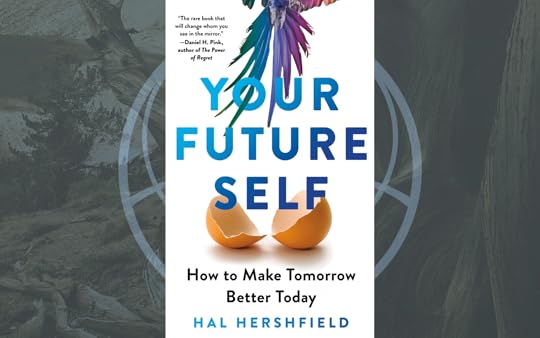
We often think about long-term thinking as something that goes beyond the individual — projects that span generations, or intellectual movements and cultures that have lasted through centuries and millennia. But long-term thinking can also be something that you practice in your daily life — the choices we make about everything from our careers to the communities we make our own. Yet making those decisions is sometimes easier said than done.
To explore the reality of long-term thinking in the world of personal decision making, we spoke with Hal Hershfield, Professor of Marketing, Behavioral Decision Making, and Psychology at UCLA’s Anderson School of Management and author of Your Future Self: How to Make Tomorrow Better Today, a new book that explores how we can balance living for today and planning for tomorrow by making deeper connections with our future selves. In our wide-ranging conversation, Hal discussed everything from the psychology of chance encounters to what he sees as the greatest success of long-term thinking in contemporary society.
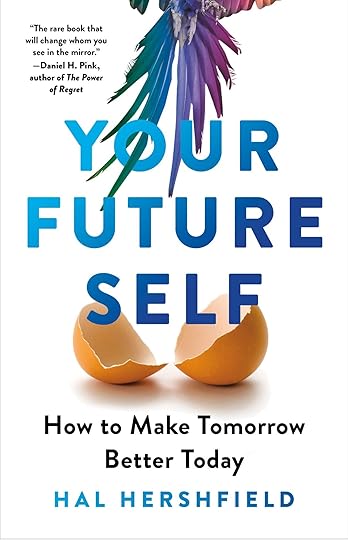
The following conversation has been edited for length and clarity.
Long Now: I was very much struck by a passage in the book where you talk about how we as humans overweight the present by seeing it as if “it's a expansive time that's divorced from the rest of our timelines, which it is simply not.” Here at The Long Now Foundation, we often talk about the long now as a tool for thinking about time where we expand what we think of as the present into the traditional domains of the past and the future. Do you see that as a useful way out of the patterns that you're identifying?
Hal Hershfield: So I do agree — to some extent. When I talk about us overweighting the present so much that we divorce it from the rest of time, what I mean is that sometimes, we fail to see how the individual presents add up to a cumulative future. I think you [at Long Now] are taking our traditional sense of the present and making it more expansive, making it more of an umbrella that includes the recent and even more distant past plus the more proximal and more distant future. The advantage there is that I think it can help convey the idea that various futures are part of who we are right now.
The one caveat is that we sometimes do more harm to ourselves than to others. Think about smoking. If I say “don't smoke, it's bad for your health,” you can respond, “I know, but I'm still gonna do it.” If I instead say, “Don't smoke. It's bad for your kids or your loved ones,” you might instead think, “Well, I don't want to ruin someone else's health.” So there are times when it makes sense to make some separations between generations, because my negative behaviors could be affecting other groups and other generations. So if they're separated out in that regard, then it can be motivational to get us to change whatever we're doing that could harm them. But if we include all generations and all groups into one big present, I may have an easier time justifying harm.
Similarly, there have been many attempts to form various citizen assemblies that try and make a voice for future generations who can't literally be there. But it always feels tricky — because you try to represent the perspective of people who are as of yet not born or are very young now, but you can't actually represent those perspectives accurately. There's an epistemic humility argument to this where you have to acknowledge that you can't really know what these future people want. Some talk about this dilemma in terms of preserving options for future generations.
I love that because the same applies for our own future selves. I truly can't know what I'm gonna be like when I'm 65. I can take some guesses — in the same way that I can take some guesses as to what humanity will be like in 2, 3, 7 generations. I really love the idea of preserving options. In a way it's very western, the idea of prioritizing freedom of choice applied intergenerationally.
Yeah. It's kind of funny writing a book for people to help them to understand their lives and the problems that they’re grappling with — a book about ways of time management and planning for the future — where reading a book is for many people a time commitment in itself. Are there one or two key insights in particular from your book that you would want someone who is currently feeling disconnected from the future self to grasp?
Buy the book! It makes a great coffee table piece. I’m kidding, of course. The one big takeaway is that our future selves can be thought of as other people. What matters is the type of relationship that we foster with them and that, when we make choices now, they will impact this other person, this other version of ourselves. So I would say the thrust of the book is figuring out how to create some harmony between the needs and wants of our current selves and the needs and wants of our future selves. But it's not all about sacrificing today for tomorrow. Instead, it’s about figuring out the harmony so that I can live my life now and enjoy the present, but do so in an intentional way so that my future self also has freedom of choice and can live the life that they want to live as well.
Something that was very impactful on that note in the book was in the last few sections, where you talk about, for example, people who use a decent portion of their savings to go on a particular vacation. You note that to do so is not a failure of this model of thinking of your future self but that it's actually, supporting the model – in a different way than what you might first expect, which is a really helpful introduction.
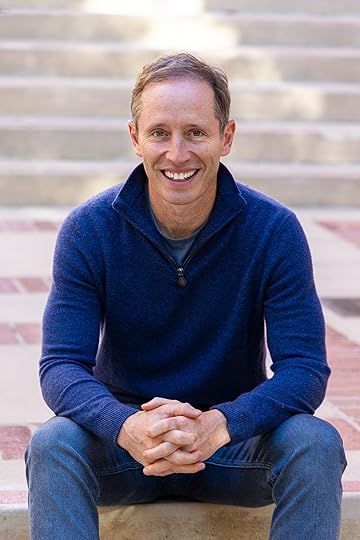 Hal Hershfield
Hal Hershfield
Much of your book focuses on matters that are to a large degree within our control in our individual lives. For example: what choices, decisions, or plans can we make in our day-to-day? So, how does the model of thinking about our future selves account for and grapple with developments that are chance-based or out of our control, as many things are?
I think it's a fascinating question that you're asking. Albert Bandura — a cognitive psychologist — wrote a paper from about 40 years ago called “Chance Encounters and Fortuitous Life Paths.” One of the things that he talks about is the idea that we can't fully anticipate how different chance encounters can impact the paths that we take. We only have so much control over our lives, right? Yet we can strive for agency so that we are making decisions to put ourselves into situations where we may come across positive chance encounters that can positively impact the directions that we go in.
To make that a little more succinct: we can only plan so much. We don't know the different directions our lives will take because we don't know the different fortuitous encounters that will occur, but what we can do is be prepared for them and treat our future selves with a degree of fluidity and flexibility. Take the Western notion of “I'm going to get married by a certain point and have kids and this and that.” That strikes me as like a life that's destined to be met with some disappointment because of how hard it is to meet those marks. But if we're open and have a focus on values that we want to have present in our lives from now to later, then I think it will create more receptivity to chance encounters.
On that point: I think many people perceive those stages of life and relationships as a kind of escalator. You get on and you move through phases of life very programmatically. That doesn't actually end up being true for most people, which is where a lot of stress comes out. The point you've made in the book about over-planning and feeling overdetermined in life feels very real to many.
Escalator feels like the right metaphor. It's funny — with my kids, we're in the midst of reading Charlie and the Great Glass Elevator, the Roald Dahl book. There, the elevator goes all different directions and that feels more like a realistic model of life.
Near the end of the book, you discussed planning for death. You discuss what you call a “mature view of time” where people recognize and “can plan for a given future, but also feel differently about those plans as time progresses.” In a certain sense, this view is oppositional or questioning the traditional ideas of long-term planning, of setting the foundations for something that will keep going in the future with clear plans. You make clear that it's not truly one or the other and that both perspectives are valuable. How do you feel we can best incorporate these different approaches?
I, of course, don't view it as being antithetical to traditional long-term planning. However, I could see how that could be perceived that way. There's a benefit to locking in plans and especially making long-term contracts. To some extent, this is how we preserve institutions. So, if we said, “Well, this is a heritage site, but we'll revisit it in three years,” it really wouldn't be a heritage site, right? There's something a little bit different there because we're talking now more intergenerationally versus on an individual level.
The thrust of that perspective was that we may find ourselves in a detrimental position if we adhere too rigidly to plans, or adhere too rigidly to our expectations that things will work out a certain way and so we may do better to pay attention to what I call the Big Why: What is the thing that's driving you? From there, maintain some flexibility around the ways that you execute those plans over time. Applying that to the intergenerational context — I think this is a little bit trickier. I agree that to some extent, intergenerationally, we want to apply more rigidity. One way to do this is to open up the flexibility around some peripheral aspects of the way a plan is carried out. If we allow flexibility at the core of a plan through an intergenerational perspective, then that may be problematic because now we all of a sudden may find ourselves shifting gears solely as a function of fads or whatever current zeitgeist might be. So that does represent a contrast between intra-individual planning and inter-individual planning.
It's tricky! In all these cases there is definitely room for both rigidity and fluidity, changing over time. One project that does do this intergenerationally over a very long time scale is the Jewish oral law. There’s a core that's the scriptures [of the Torah] . Then there's generation after generation of people — different rabbis and scholars — debating over it while still working from the same core.
That's a really good example. Thank you for raising that.
Near the end of the book, you quote Alexander Rose, our now former executive director , who says “many of our present problems are because of a lack of long-term thinking in the past.” You talk about a number of those problems. From climate to our built environment people are aware of the ways in which short-term thinking in the past has failed us. So I want to flip the question around and ask: While you were writing and researching this book, did you come across particular cases of the benefits that we have reaped from prior generations thinking of their future selves? Are there success stories in this variety of long-term thinking that we can see in our society today?
That's a really great question; it's positive and optimistic. Probably the first thing that comes to mind is the concept of a retirement system and social security system. It’s still a great example of thinking ahead. When that was created, of course, average life expectancy was considerably lower than it is now. So there was less of a burden on the part of the state to support people after they retired, but even so it represented really forward thinking because, by putting that system into place, it did create a safety net for people after they retire. To me, that’s an example of a future thinking starting a long time back that is quite positive.
That also feels like a great case study in that it's people thinking of their individual retirements when they pay into it, but actually each of those are going to pay for other people's retirements collectively on a generational scale. It's subtly working in this idea of supporting your own future selves and collective futures as well, which is very exciting.
It's true. I wonder how many people think about the collective aspect of it — because once you get into the weeds of social security you quickly realize that you’re paying in right now for other people — I don't know how well that's framed and understood on a general level. But, you're absolutely right. It's a great example of that.
And we've made it so normal and such a core, untouchable part of our social fabric, which is not something you could have predicted a generation prior to when the program was implemented.
That's so true. That's probably my best example.
Thanks so much for talking with us.
Your Future Self
is out now from Little Brown Spark.
July 26, 2023
The Future Of Invasive Species Mitigation
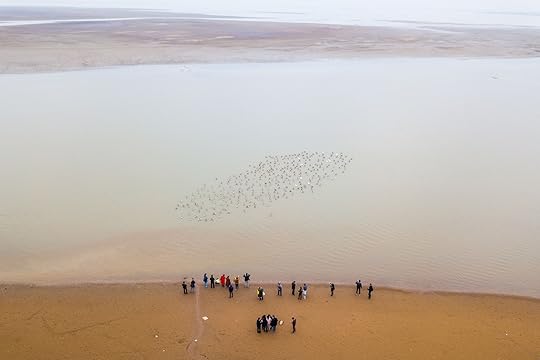
In the heart of the Jiangxi Province of China lies Poyang Lake, the largest body of freshwater in the nation. The lake, which is part of the Yangtze River watershed, is an oasis of biodiversity. A visitor to the shores of the lake could on any given day in the wet season see a “river pig” — an endangered finless porpoise — or one of the dozens of migratory bird species that winter on the lake, most prominently the Siberian white crane.

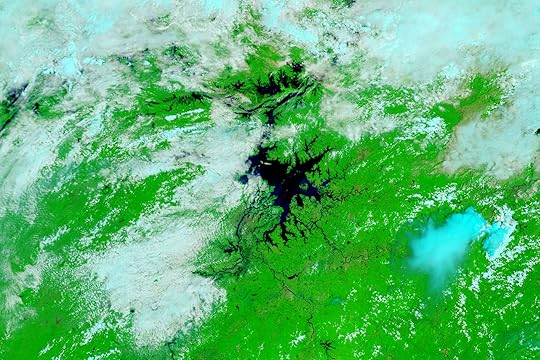 Poyang Lake in the wet and dry seasons. Data from NASA Earth Observatory
Poyang Lake in the wet and dry seasons. Data from NASA Earth ObservatoryThe abundance of species has proven effective at energizing the local economy, which relies heavily on the aquaculture of non-native species such as sturgeon, tilapia, red swamp crayfish and white freshwater prawn which were introduced by a burgeoning aquaculture industry around 02000. This influx of non-native species, however, has also shaken up the lake’s ecological balance. Parrot’s feather, a species of rooted emergent flora native to South America that was introduced to the lake in order to support habitats for red swamp crayfish, has started to outcompete native plants for space.
A study published in BioInvasions Records, an academic journal dedicated to the study of invasive species, found that this plant is not only displacing native competitors, but also facilitating the invasion of western mosquitofish by providing wider refuge from predators. The effect of this invasion dominoes as the influx in mosquitofish prey on native amphibians, reptiles and fish at unsustainable rates.
Parrot’s feather is just one of the non-native species beginning to affect the greater balance of Poyang Lake’s ecosystem. In a recent lake-wide survey of species published in Aquatic Invasions, an average of 4.36 new species are discovered within the lake’s basin every year, providing more pathways for non-native competitors to wipe out species that have called it home for centuries and even millennia.
 Parrot’s feather (Myriophyllum aquaticum). Harry Rose from South West Rocks, Australia, CC BY 2.0 , via Wikimedia Commons
Parrot’s feather (Myriophyllum aquaticum). Harry Rose from South West Rocks, Australia, CC BY 2.0 , via Wikimedia CommonsPoyang Lake is not the first ecosystem to be threatened by influxes of new species, but it could be a bellwether for how unmitigated invasive species can affect even the most biodiverse ecosystems. In an increasingly globalized world, these dynamics of invasion are becoming exponentially difficult to delay, let alone stop.
Scientists have already observed the ecological collapse that can result from unmitigated invasive species. A study conducted at the University of Cambridge in 02021 tracked the effects of invasive Asian silver carp and American signal crayfish on bodies of freshwater. The resulting over-consumption of lakes’ native species resulted in increased water turbidity, creating perfect storms for toxic algal blooms in each scenario. Once the turbidity of the water exceeded critical levels, the algae poisoned the water supply in each lake, killing native fauna and blocking sunlight required for native flora to grow and replacing the once biodiverse aquatic habitats with algal wastelands.
Governments and international organizations are already making slowing the spread of invasive species a priority. The UN Convention on Biological Diversity, signed into action in 01993, establishes the obligation of its signatories to “prevent the introduction of, control or eradicate those alien species which threaten ecosystems, habitats or species.” In the decades that have followed, conservationists have taken this obligation to heart, exterminating non-native species using pesticides, hunts, and even gastronomy.
Detection & PreventionYet these efforts may in some regards be overzealous. Not all species that newly enter an ecosystem are invasive species, and the distinctions between varieties of non-native species are key to managing them.
“Invasive species are, to the scientists who study them anyway, a subset of non-native species. In popular literature, the two terms are used synonymously,” notes biologist Dr. Daniel Simberloff, Gore Hunger Professor of Environmental Science at The University of Tennessee. “To people in the field, a non-native species is a species that isn’t native to an area and arrived there with human assistance, either deliberately or inadvertently.”
This distinction is paramount, as not all non-native species become invasive. Many species establish small populations that either remain secluded and non-threatening or go extinct in that environment altogether, many of which scientists don’t ever know about.
“We wouldn’t call those invasive,” says Simberloff. “A lot of ornamental plants that are also deliberately kept in people's backyards are non-native […] but they can't survive without human assistance, so we wouldn't call those invasive, either.”
Although it is possible for non-native species to establish populations outside their domain of origin and remain benign, it’s challenging and sometimes impossible for scientists to accurately determine if or when a species will become a threat to an established ecosystem until after the invasion has begun.
“We don't really know how many non-native species arrive and don't even establish populations, or their populations are established, but then go extinct very quickly,” says Simberloff. “There are a few cases where we do have some real data, and those are for deliberate introductions where there are good historical records.”
Simberloff cites cases where species were introduced intentionally for biological control purposes. In these cases, a predator or competitor is temporarily introduced or even established permanently to reduce or remove populations of undesired species in a given region. In other cases, invasive species are introduced via shifts in climate, societal changes or individual actions.
Benign non-native species can also become invasive over time. There’s always a possibility that an introduced population could skyrocket at a moment’s notice, given proper conditions, which can shift through human interference or even natural means.
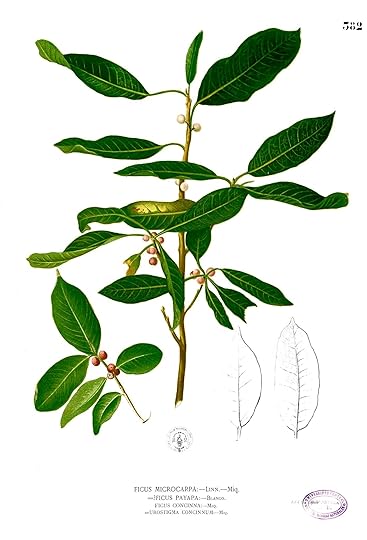
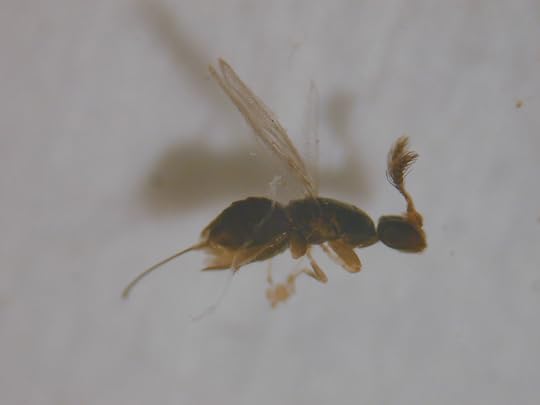 Ficus microcarpa, the laurel fig, and Eupristina verticillata, the wasp that pollinates it and allows for it to spread as an invasive species.
Ficus microcarpa, the laurel fig, and Eupristina verticillata, the wasp that pollinates it and allows for it to spread as an invasive species.Ficus microcarpa, native to India and Malaysia and commonly known as laurel fig, is a prime example of a late bloomer in invasion ecology. The fig was commonly kept as an ornamental plant in Coral Gables and Miami, Florida for decades before its wild population inexplicably spiked, strangling native host trees and shading out potential competitors. As it turns out, a key component of its reproduction involved a companion species of wasp.
“Every fig has to be pollinated by its own species of fig wasp. If that fig wasp isn't there, that will be a sterile plant; it’s not going to reproduce,” Simberloff explains. “Suddenly — we don't know how — its fig wasp arrived, and then the fig started to spread.”
This “lag phenomenon” described by Simberloff is often one of the variables that makes it so difficult to predict if a certain species will become invasive. If there is even an inkling of a possibility that the necessary conditions could be met, therein lies the potential for a non-native species to become a problem.
Some nations with particularly delicate ecosystems have employed strict legislation and policy to prevent non-native species from entering, let alone establishing viable populations. The island nation of New Zealand has stringent regulations on the importation of animals. According to their Environmental Protection Authority, “some organisms are considered very high risk to the New Zealand environment and must never be imported, developed, field tested or released.” The country’s expansive list of barred species includes snakes of any kind and several other examples of fauna, including snails and mammals.
Furthermore, biosecurity appears to be a communal value in New Zealand, so much so that there is both a dedicated pests-and-disease hotline and government smartphone application available to assist in the identification and reporting of unwelcome species.

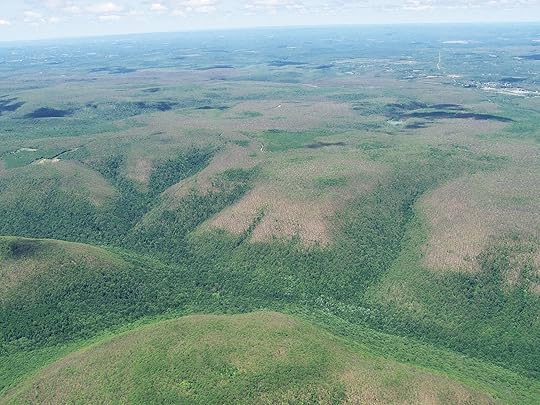
 1: Lymantria dispar, the spongy moth, can be a vicious force against forests. (By Didier Descouens - Own work, CC BY-SA 4.0) 2: A forest in Pennsylvania infested by the moth. (Dhalusa, CC BY-SA 3.0, via Wikimedia Commons) 3: Even in New Zealand, a country known for strict invasive species restrictions, efforts to prevent the spread of species like the spongy moth can prove controversial.
1: Lymantria dispar, the spongy moth, can be a vicious force against forests. (By Didier Descouens - Own work, CC BY-SA 4.0) 2: A forest in Pennsylvania infested by the moth. (Dhalusa, CC BY-SA 3.0, via Wikimedia Commons) 3: Even in New Zealand, a country known for strict invasive species restrictions, efforts to prevent the spread of species like the spongy moth can prove controversial.Although New Zealand has established effective protocols, there are still species that slip through the system. In 02003, a population of spongy moth caterpillars emerged. According to the Ministry of Primary Industries, which oversees farming, fishing, and biosecurity in New Zealand, “this moth lays hundreds of eggs in a single mass. The egg masses then hatch, releasing hundreds of hungry caterpillars. These caterpillars can strip the leaves from entire trees, devastating stands of trees.” The moth was later declared eradicated from the country in 02005 after an aerial insecticide campaign led by the Ministry of Agriculture and Forestry. Despite New Zealand’s history of biosecurity success, this effective amount of surveillance, policy and mitigation is not as easily achievable in non-isolated nations.
In Europe, the American mink, introduced in the 01920s for fur farming, has established an invasive population throughout the continent and according to Simberloff, “is causing many impacts — not least on the endangered European mink, which is a highly imperiled species.” Despite the known risks that accompany the introduction of the foreign mink, which can serve as a vector for new diseases to the region, fur-farming countries like Poland and Denmark, having culled masses of mink in 02020 due to their vulnerability to COVID-19, have refused to list the species as invasive for economic reasons.
Although the species is among one of Europe’s most invasive, it’s unlikely that the American Mink will be unilaterally designated as such. The failure to internationally cooperate is a phenomenon with which scientists have become all too familiar. For instance, international global warming legislation based on scientific evidence is also frequently stalled due to the varied economic priorities of sovereign governments.
“Both invasions and global warming,” Simberloff concludes, “do not make one optimistic about mobilizing popular pressure to do something that should be done.”
Surgical StrikesIf prevention isn’t reasonably feasible in an interdependent and globalized society, the question remains as to what the best method to prevent all-out ecological collapse is. Looking ahead, Simberloff points to molecular genetics as a potential method. Oxitec, a UK-based biotechnology company, is using this method in its battle against the invasive, disease-spreading mosquito species Aedes aegypti.
Aedes aegypti is a primary transmitter of Zika, dengue and chikungunya. Initially confined to tropical and subtropical regions, global warming has facilitated the expansion of its viable habitat. Traditional means of pest control like insecticides have proven flawed as surviving mosquito populations gradually evolve resistance to common chemical agents. Oxitec’s genetically modified male mosquito takes a different tack to eliminate non-native populations. The genetically modified mosquitoes released by Oxitec use the universal biological imperative to reproduce against mosquito populations via two inserted genes.
The first gene is for monitoring purposes and produces a fluorescent protein called DsRed2 that scientists can use to distinguish genetically modified mosquitoes from naturally produced mosquitos. tTAV, the protein encoded by the second gene, is the key to restraining invasive mosquito populations. The gene is what’s known as a repressible self-limiting component. When active, it causes the overproduction of tTAV, a protein that interrupts the synthesis of other vital proteins, causing the offspring to die off before they are sexually mature, preventing reproduction. The goal is for released genetically modified mosquitoes to mate with wild females in lieu of wild males, causing offspring to inherit the gene and reducing the population with each generation.
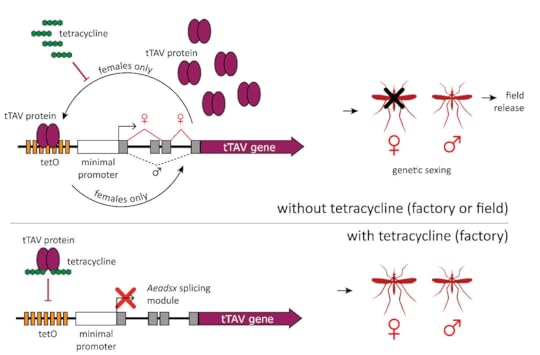 A schematic representation of the OX5034 female-lethal trait mediated through sex-specific tTAV-OX5034 expression. Via EPA decision 549240 for Experimental Use Permit 93167-EUP-E
A schematic representation of the OX5034 female-lethal trait mediated through sex-specific tTAV-OX5034 expression. Via EPA decision 549240 for Experimental Use Permit 93167-EUP-E “It’s just very elegant, very simple, and it just works,” says Grey Frandsen, Oxitec CEO, as he lists the success stories of his company’s gene insertion program. “It’s a really targeted and surgical way to fight any particular pest and do it without any unintentional impact whatsoever.”
Unlike chemical control via pesticides or alternative forms of biocontrol, unintended consequences are largely eliminated according to a U.S. Environmental Protection Agency evaluation. The male mosquitoes do not bite, the control methods only target Aedes aegypti and the genetic modification is non-toxic to predator animals.
Although these scientific advancements provide a glimpse into the future of invasive species elimination, old-fashioned methods to reduce and remove harmful populations should not be discounted.
“The third general approach is mechanical or physical mitigation,” adds Simberloff. “You rip them out or you kill them, what have you. That works sometimes, too.”
The South Florida Water Management District is employing this approach in its lengthy battle with invasive Burmese pythons in the Everglades. The snakes were introduced to the area, likely via the pet trade, and established a breeding population by the early 02000s, shortly before ascending to the top of the ecosystem’s food chain. According to the agency, “Burmese pythons possess an insatiable appetite” and “can not only kill Florida native prey species and pose a threat to humans, but also rob panthers, birds of prey, alligators and bobcats of a primary food source.”
Due to increased sightings and the snake’s threat to native wildlife, the agency started the Python Elimination Program in 02017. The program, which “incentivizes a limited number of public-spirited individuals to humanely euthanize these destructive snakes,” currently pays hunters up to $18 an hour, with additional bonuses for game over four feet in length. Active nest verifications can also earn these enthusiasts a $200 bonus. The program has recorded over 7,000 python removals since its inception.
All methods considered, it’s important to approach invasive species with the nuance that there may be no one-size-fits-all solution.
Although living in a globalized society has contributed to these invasions becoming a near-universal issue, precise research and tactics are needed for each scenario.
This precision and the time it requires is the crux of what makes these crises so difficult to solve. Before research concludes or variables necessary for spread are identified, it’s possible that invasions will have expanded beyond the usefulness of preventative measures.
Furthermore, acting with haste has its own drawbacks as well. Rash measures in the past have had unintended consequences and have also negatively affected local species. For example, The Bald Eagle was on the brink of extinction in North America until it was discovered that the first synthetic pesticide, known as DDT, was hindering the bird’s ability to properly form eggshells.
The reality of the matter is that the happy medium between precision and timeliness in the war against invasive species has been elusive, despite decades of effort on the part of biologists and others working in conservation. Nevertheless, our planet’s precarious ecosystems hang in the balance between these competing tactics.
“All of those approaches have successes and failures,” affirms Simberloff. “It's worrisome and it's challenging. In some cases we have already done a good job. In some cases we could do a much better one.”
July 19, 2023
Shining a Light on the Digital Dark Age
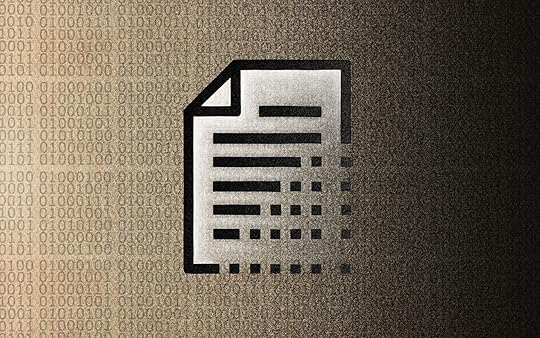
The Dead Sea scrolls, made of parchment and papyrus, are still readable nearly two millennia after their creation — yet the expected shelf life of a DVD is about 100 years. Several of Andy Warhol’s doodles, created and stored on a Commodore Amiga computer in the 01980s, were forever stranded there in an obsolete format. During a data-migration in 02019, millions of songs, videos and photos were lost when MySpace — once the Internet’s leading social network — fell prey to an irreversible data loss.
A false sense of security persists surrounding digitized documents: because an infinite number of identical copies can be made of any original, most of us believe that our electronic files have an indefinite shelf life and unlimited retrieval opportunities. In fact, preserving the world’s online content is an increasing concern, particularly as file formats (and the hardware and software used to run them) become scarce, inaccessible, or antiquated, technologies evolve, and data decays. Without constant maintenance and management, most digital information will be lost in just a few decades. Our modern records are far from permanent.
Obstacles to data preservation are generally divided into three broad categories: hardware longevity (e.g., a hard drive that degrades and eventually fails); format accessibility (a 5 ¼ inch floppy disk formatted with a filesystem that can’t be read by a new laptop); and comprehensibility (a document with an long-abandoned file type that can’t be interpreted by any modern machine). The problem is compounded by encryption (data designed to be inaccessible) and abundance (deciding what among the vast human archive of stored data is actually worth preserving).
The looming threat of the so-called “Digital Dark Age”, accelerated by the extraordinary growth of an invisible commodity — data — suggests we have fallen from a golden age of preservation in which everything of value was saved. In fact, countless records of previous historical eras have all but disappeared. The first Dark Ages, shorthand for the period beginning with the fall of the Roman Empire and stretching into the Middle Ages (00500-01000 CE), weren’t actually characterized by intellectual and cultural emptiness but rather by a dearth of historical documentation produced during that era.
Even institutions built for the express purpose of information preservation have succumbed to the ravages of time, natural disaster or human conquest. The famous library of Alexandria, one of the most important repositories of knowledge in the ancient world, eventually faded into obscurity. Built in the fourth century B.C., the library flourished for some six centuries, an unparalleled center of intellectual pursuit. Alexandria’s archive was said to contain half a million papyrus scrolls — the largest collection of manuscripts in the ancient world — including works by Plato, Aristotle, Homer and Herodotus. By the fifth century A.D., however, the majority of its collections had been stolen or destroyed, and the library fell into disrepair.
Digital archives are no different. The durability of the web is far from guaranteed. Link rot, in which outdated links lead readers to dead content (or a cheeky dinosaur icon), sets in like a pestilence. Corporate data sets are often abandoned when a company folds, left to sit in proprietary formats that no one without the right combination of hardware, software, and encryption keys can access. Scientific data is a particularly thorny problem: unless it’s saved to a public repository accessible to other researchers, technical information essentially becomes unusable or lost. Beyond switching to analog alternatives, which have their own drawbacks, how might we secure our digital information so that it survives for generations? How can individuals, private corporations and public entities coordinate efforts to ensure that their data is saved in more resilient formats?
Organizations like The Long Now Foundation are among those working to combat the Digital Dark Age (Long Now in fact coined the term at an early digital continuity conference in 01998), drawing on open-source software, coordinated action across platforms, transparency in design, innovative technologies, and a long view of preservation. From thought experiments and industry analysis to more concrete projects, these organizations are imagining preservation on a massive time scale.
 The Rosetta Disk is just one possible way that we can preserve linguistic data for future generations.
The Rosetta Disk is just one possible way that we can preserve linguistic data for future generations.Consider the Rosetta Project, Long Now’s first exploration into very long-term archiving. The idea was to build a publicly accessible digital library of human languages that would be readable to an audience 10,000 years hence. “What does it mean to have a 10,000-year library?” asks Andrew Warner, Project Manager of Rosetta. “Having parallel translations was enough to unlock the actual Rosetta Stone, so we decided to construct a ‘decoder ring,’ figuring that if someone understood one of the 1,500 languages on our disk, they could eventually decipher the entire library.” Long Now worked with linguists and engineers to microscopically etch this text onto a solid nickel disk, creating an artifact that could survive millennia. More symbolic than pragmatic, the Rosetta Project underscores the problem of digital obsolescence and explores ways we might address it through creative archival storage methods. “We created the disk not to be apocalyptic, but to encourage people to think about our more immediate future,” says Warner.
💡READ Kevin Kelly's 02008 Long Now essay on the ideas behind the Rosetta Disk.READ Laura Welcher's 02022 paper on Rosetta, archives, and linguistic data.
Indeed, the idea of a 10,000 year timescale captures an anxious public imagination that’s very much grounded in the present. How will technological innovation such as generative artificial intelligence change the way we interpret (and govern) the world? What threats — climate change, pandemics, nuclear war, economic instability, asteroid impacts — will loom large in the next decamillennium? Which information should we preserve for posterity, and how? What are the costs associated with that preservation, be they economic, environmental or moral? “Long Now will be a keeper of knowledge,” says Warner. “But we don’t want to end up erecting a digital edifice in a barren wasteland.”
As personal computing and the ability to create digital documents became ubiquitous toward the end of the 20th century, preservation institutions — museums, libraries, non-profits, archives — and individuals — were faced with a new challenge: not simply how to preserve material, but what to collect and preserve in perpetuity. The astonishingly rapid accumulation of data has led to a problem of abundance: digital information is accumulating at a staggering rate. Scientific, medical and government sectors in particular have amassed billions of emails, messages, reports, cables and images, leaving future historians to sift through and categorize an enormously capacious collection — one projected to exceed hundreds of zettabytes by 02025. The Clinton White House, by one estimate, churned out 6 million emails per year. NASA’s sky surveys rely on over 2 billion uploaded images. The endless proliferation of junk-content, both human and A.I.-generated, makes sifting through all this data even trickier.
The term of art for this sorting is known as appraisal: deciding whether or not something should be preserved and what resources are required to do so. “One ongoing challenge is that there’s so much to preserve, and so much that can help diversify the archival record and reflect the society we live in,” says Jefferson Bailey, Director of Archiving & Data Services at the Internet Archive, a digital library based in San Francisco that provides free public access to countless collections of digitized materials.
 Servers housed at the Internet Archive's San Francisco headquarters.
Servers housed at the Internet Archive's San Francisco headquarters.The organization began in 01996 by archiving the Internet itself, a medium that was just beginning to grow in use. Like newspapers, the content published on the web was ephemeral — but unlike newspapers, no one was saving it. Now, the service has more than two million users per day, the vast majority of whom use the site’s Wayback Machine, a search function for over 700 billion pages of internet history. Educators interested in archived websites, journalists tracking citations, litigators seeking out intellectual property evidencing or trademark infringement, even armchair scholars curious about the Internet’s past, all can take a ride on this digital time travel apparatus, whose mission is “to provide Universal Access to All Knowledge.” That includes websites, music, films, moving images and books.
💡WATCH Brewster Kahle's 02011 Long Now Talk, "Universal Access to All Knowledge," on how the Internet Archive, deemed "impossible" when he founded it in 01996, became an essential part of the web.WATCH Jason Scott's 02015 Long Now Talk, "The Web in an Eye Blink," which details Scott's project at the Internet Archive to save all the computer games and make them playable again inside modern web browsers.
Some of the services provided by the Internet Archive enable institutions to document their own web properties or older materials, but the frequency of this backup varies. “We archive many widely-read and frequently-changing websites multiple times a day, whereas other sites may only be archived once or twice a year,” says Bailey. Web scrapers allow for easy archiving, but then there’s the problem of storage. A single copy of the Internet Archive library collection occupies more than 99 petabytes of server space (the organization stores at least two copies of everything). Safely storing any long-lived data requires significant emissions, energy and cost.
The Internet Archive also takes multi-century preservation energy costs into account: “We own and operate and run all our own data centers,” says Bailey. “That’s partly because we’re an archive and don’t want to be dependent on corporate infrastructure, and partly because we can then run less expensive climate control operations.”
 Microsoft Research’s Project Silica storage device.
Microsoft Research’s Project Silica storage device.Microsoft’s Project Silica aims to tackle the problem by providing an alternative to traditional magnetic media, which degrades over time. The company created a low-cost, durable WORM media (an acronym for Write Once, Read Many, which means that data is written to a storage medium a single time and cannot be erased or modified). Considered immutable, WORM storage plays a pivotal role in meeting data security and compliance requirements and protecting against ransomware and other threats. Project Silica’s media is also resistant to electromagnetic frequencies: stored in quartz glass, the lifetime of data can be extended to tens of thousands of years. This has important implications for sustainability, because users can leave data in situ, eliminating the costly cycle of periodically copying data to a new media generation.
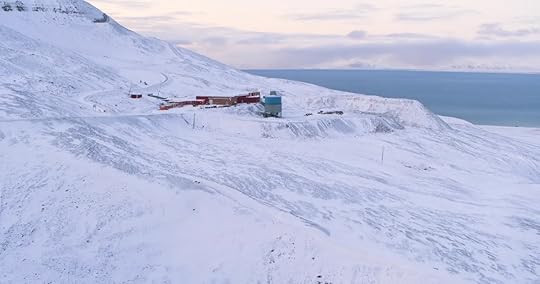
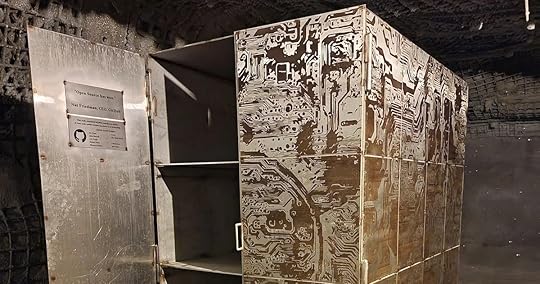 The Arctic Code Vault in Svalbard.
The Arctic Code Vault in Svalbard.Another option is to store data in Earth’s most remote places. GitHub created an Arctic Code Vault, a data repository preserved in the Arctic World Archive (AWA), a very-long-term archival facility 250 meters deep in the permafrost of an Arctic mountain. Such cold storage is meant to last at least 1,000 years and shield data from the outside world’s effects. Arctic archiving strategies could have potential as much of the world warms. Eliminating the need for costly HVAC filtration or cooling systems, building for redundancy, putting in place multiple failovers, storing data in remote or unconventional locations — these are certainly laudable measures, but more will need to be done to mitigate the enormous ecological impact of all this storage. Streaming, cryptocurrency, and day-to-day Internet use already make up nearly 4% of global CO2 emissions — a statistic that rivals the carbon footprint of the aviation industry. Sustainability must be a paramount concern of digital preservation technologies.
For individual users worried about data preservation, the answer may lie in a switch to better systems with more robust methods of encoding, or investing in mechanisms that permit a kind of time travel to older formats. Archive-It, Internet Archive’s web archiving service, offers subsidized and grant-funded services to organizations, including over 1,500 libraries, archives, governments and nonprofits, enabling users to create a personalized cultural heritage storage system. There’s also Permanent Legacy Foundation, a cloud service backed by a nonprofit that allows consumers to permanently store and share their digital archives with loved ones, community members and future generations. “The most distinctive component of Permanent is our legacy planning feature,” says Robert Friedman, Executive Director at Permanent. “We have a very robust vision for memorialized content — what people can do with their archives once they’re no longer able to maintain them.” For a one-time fee, Permanent will convert a user’s files (documents, video, image, audio) to more durable formats; a Microsoft Word document might be converted to a PDF, for example. “The purpose is to make sure there exists at least one copy of every file that isn’t tied to a proprietary format,” says Friedman.
💡READ our 02020 profile of the Permanent Legacy Foundation and its goal to preserve individuals' digital legacies for future generations.Not being tied to a corporate entity or the commercial cloud means many of these organizations can have a direct stake in the sustainability of their operations. “If you need your data available consistently, then you have to keep running the operation at idle,” says Friedman. But for many people, their data will never be needed again after death, in which case, those personal archives can be sealed and deleted. “We don’t strip you of your rights,” he adds, “but we do need to know what to do with that data, including whether to destroy it.” Permanent is also conservative in its appraisals, and its subscription model encourages individuals to be selective about what they choose to preserve. (Fees collected by Permanent are used to fund the ongoing cost of storage and operations.)
“This challenge is not something that one organization is going to solve: it has to be a collective effort,” says Bailey. Federal agencies, public libraries, research institutions and private corporations, each with different budgets and mandates, must come together to address the issue of storage and associated concerns. And, as technology accelerates and emulation of older systems becomes more difficult, Digital Dark Age preppers may need to consider not just the survival of data, but the possibility that it may be misunderstood. Getting future readers to parse what we’ve preserved, and to make sense of that information, is an existential challenge without easy answers.
The basic lingua franca of the internet is bits: zeroes and ones that lack intrinsic meaning without software and hardware. These bits are effectively linguistic symbols, which can be transmitted over long distances and represent wildly different objects — a string of ones and zeros might represent a photograph, video, sound or text. Barring the invention of some extraordinary universal translation system, making sense of these binary codes without knowing how they were intended to be read is impossible. Also consider online disinformation, spread either by humans or artificial intelligence. Many digital archives already struggle to exclude or annotate content, not to mention living websites like Wikipedia, Twitter or Facebook, which must be continuously monitored for harmful or fraudulent content. “If you exclude fake news, does that mean you run the risk of a non-representative archive?” asks Bailey. “We are open to removal if there’s a reason, and we do it.”
Public and private organizations and policy-makers will need to decide what content should be restricted, embargoed, or scraped from the web entirely, and design robust digital repositories that can weather the ravages of time. People with limited resources must also be ensured the ability to preserve their data; long-term storage should be designed for equity as well as for sustainability. Finally, we must be judicious in what we store and preserve, creating a meaningful collection for future historians. Our future — and our past — depend on it.
June 28, 2023
The River Twice
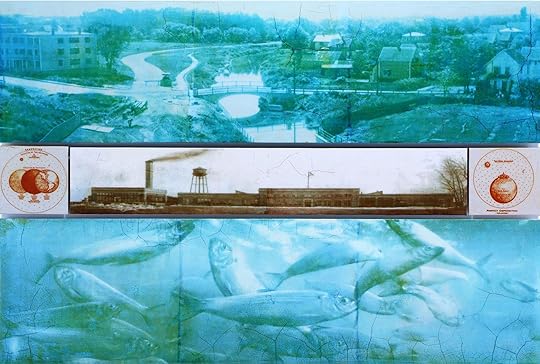
Every spring, the not-quite-pristine waters of Boston Harbor fill with schools of silvery, hand-sized fish known as alewives and blueback herring.
Some of them gather at the mouth of a slow-moving river that winds through one of the most densely populated and heavily industrialized watersheds in America. After spending three or four years in the Atlantic Ocean, the herring have returned to spawn in the freshwater ponds where they were born, at the headwaters of the Mystic River.
In my imagination, the herring hesitate before committing to this last leg of their journey. Do they remember what awaits them?
To reach their spawning grounds seven miles from the harbor, the herring will have to swim past shoals of rusted shopping carts and ancient tires embedded in the toxic muck left by four centuries of human enterprise. Tanneries, shipyards, slaughterhouses, chemical and glue factories, wastewater utilities, scrap yards, power plants — all have used the Mystic as a drainpipe, either deliberately or through neglect.
But today, the water is clean enough to sustain fish and many other kinds of fauna. As they push upstream, the herring may hear the muffled sounds of laughter, bicycle bells, car horns and music coming from riverside parks. They will slip under hundreds of kayaks, dinghies, motorboats, rowing sculls and paddleboards and dart through the shadows cast by a total of thirteen bridges. At three different points they will muscle their way up fish ladders to get past the dams that punctuate the upper reaches of the river. They will generally ignore baited hooks and garish lures cast by anglers. And they will try to evade the herring gulls, cormorants, herons, striped bass, snapping turtles, and even the occasional bald eagle that love to eat them.
Last year, an estimated 420,000 herring made it through this gauntlet and into the safety of three urban ponds where they could lay their eggs.
And almost no one noticed.
That an urban river should teem with wildlife while serving as a magnet for human recreation no longer seems remarkable to the people of this part of Boston. Few are familiar with the chain of human actions and reactions that produced this happy outcome. Fewer still know that for most of the past 150 years, the Mystic River was seen as an eyesore, a civic disgrace, and a monument to inertia, indifference, and greed.
In this sense, the Mystic is an extreme example of a paradoxical pattern repeated in urban waterways around the world.
First, humans discover the advantages of living next to rivers, which provide a convenient source of drinking water, food, transportation and waste disposal. For a few decades — or even centuries — these uses coexist, even as people downstream begin to complain about the smell. A Bronze Age settlement eventually becomes a trading post, which grows into a medieval town and, centuries later, an industrializing city, smell and waste building up along the way. Until one hot day in the summer of 01858 a statesman in London describes the River Thames as “a Stygian pool, reeking with ineffable and intolerable horrors.”
Civil engineers are summoned, and they deliver the bad news. The only way to resurrect the river and get rid of the smell is to install a massive system for underground sewage collection and pass strict laws prohibiting industrial discharges. The necessary infrastructure is staggeringly expensive and will take years to build, at great inconvenience to city residents. Even after the system is completed, the river will need at least half a century to gradually purge itself to the point where swimming or fishing might once again be safe.
The implication of this temporal caveat — that politicians who announce the project will be long dead when it delivers its full intended benefits — would normally be a non-starter for a municipal budget committee. But the revulsion provoked by raw sewage, and its power as a symbol of backwardness, make it impossible to postpone the matter indefinitely. In London, the tipping point came during the “Great Stink” of 01858, when the combination of a heat wave and low water levels made things so unbearable that Parliament was forced to fund a revolutionary drainage system that is still in use today.
In city after city, similar crises set in motion a process that can be neatly plotted on a graph. Increasing investments in sanitation infrastructure and stricter enforcement of environmental laws gradually lead to better water quality. Fish and waterfowl eventually return, to the amazement of local residents. Riverfront real estate soars in value, prompting the construction of new housing, parks, restaurants and music venues. Generations that had lived “with their backs to the river” rediscover the pleasures of relaxing on its banks. In many European cities, once-squalid waterways are now so immaculate that downtown office workers take lunch-time dips in the summer, no showers required. In Bern, Switzerland, and Munich, Germany, some people “swim to work.”
Then, in the final stage of this process, everyone succumbs to collective amnesia.
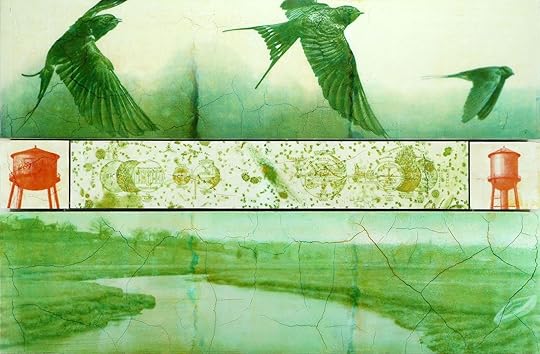 Bradford Johnson, Swallows (02022)Forget, recall, demand, repeat
Bradford Johnson, Swallows (02022)Forget, recall, demand, repeatIn Ian McEwan’s 02005 novel Saturday, the protagonist briefly reflects on the infrastructure that makes life in his London townhouse so pleasant: “…an eighteenth-century dream bathed and embraced by modernity, by streetlight from above, and from below fiber-optic cables, and cool fresh water coursing down pipes, and sewage borne away in an instant of forgetting.”
While the engineering, biology and economics of river restorations are relatively straightforward, the stories we tell ourselves about them are not. “An instant of forgetting” could well be the motto of all well-functioning sanitation systems, which conveniently detach us from the reality of the waste we produce. But the chain of events that brings us to this instant often begins with the act of remembering an uncontaminated past.
Call it ecological nostalgia. A search of the words “pollution” and “Mystic River” in the digital archives of the Boston Globe turns up nearly 700 items spread over the past 155 years, and offers a useful proxy for tracking the perceptions of the river over time. We think of pollution as a modern phenomenon, but in the late 19th century the Globe was full of letters, reports and opinions recalling the river in an earlier, uncorrupted state. In 01865, a writer complains that formerly delicious oysters from the Mystic have been “rendered unpalatable” by pollution. In 01876 a correspondent claims that as a boy he enjoyed swimming in the Mystic — before it was turned into an open sewer. Four years later a writer laments that the river herring fishery “was formerly so great that the towns received quite a large revenue from it.” And by 01905, a columnist calls for the “improvement and purification” of the Mystic, urging the Board of Health and the Metropolitan Park Commission to work together on “the restoration of the river to its former attractive and sanitary condition.”
These sepia-colored evocations of a prelapsarian past are a recurring feature of river restoration narratives to this day. “Sadly, only septuagenarians can now recall summer days a half century earlier when the laughter of children swimming in the Mystic River echoed in this vicinity,” writes a Globe columnist in 01993. Last year, in a piece on the spectacular recovery of Boston’s better-known Charles River, Derrick Z. Jackson quoted an activist who believes such images were critical to building public support for the project: “people remembered that their grandmothers swam in the Charles and wanted that for themselves again.” Whether or not anyone was actually swimming in these rivers in the mid-20th century is irrelevant — the idea is evocative and, as a call to action, effective.
But the notion that a watercourse can be healed and returned to an Edenic state is also disingenuous. As Heraclitus elegantly put in the fourth century BC, “No man ever steps into a river twice; for it is not the same river, and he is not the same man.” Biologists are quick to point out that the Mystic watershed will never revert to its 17th century state. As chronicled in Richard H. Beinecke’s The Mystic River: A Natural and Human History and Recreation Guide (02013), when English colonists arrived they encountered a thinly populated tidal marshland where the native Massachussett, Nipmuc and Pawtucket tribes had lived sustainably for at least two thousand years. Since then, the Mystic and its tributaries have been dammed, channelized, straightened and dredged into an unstable ecosystem that will require active maintenance in perpetuity.
As the physical river has changed, so have the subjective justifications for restoring it. The Boston Globe archives show that for a 50-year period starting in the 01860s, people were primarily motivated by the loss of oysters and fish stocks described above, and by fears that exposure to sewage might lead to outbreaks of cholera and typhoid. But by the time of the Great Depression, the first municipal sewage systems had largely succeeded in channeling wastewater away from residential areas, and concerns about the river had found new targets.
Writers to the Globe began to complain that fuel leaks from barges on the Mystic were spoiling “the only bathing beach” in the city of Somerville, one of the main towns along the river. In 01930, the Globe reported that local and state representatives “stormed the office of the Metropolitan Planning Division yesterday to request action on the 29-year-old project of improving and developing certain tracts along the Mystic riverbank for playground and bathing purposes.” A decade later, not much had changed. “For years,” claimed an editorial in 01940, “the Mystic River has been unfit for bathing because of pollution and hundreds of children in Somerville, Medford and Arlington have been deprived of their most natural and accessible swimming place.”
In the 01960s and 70s, this emphasis on recreational uses of the river broadened into the ecological priorities of the nascent environmental movement. Apocalyptic images of fire burning on the surface of Cleveland’s Cuyahoga River galvanized public alarm over the state of urban waterways. President Lyndon Johnson authorized billions of dollars in federal funds to “end pollution” and subsidize the construction of new sewage treatment plants. And the Clean Water Act of 01972 imposed ambitious benchmarks and aggressive timelines for curtailing source pollution.
Suddenly, the tiny community of Bostonians who cared about the Mystic felt like they were part of a global movement. Articles from this period feature junior high schoolers taking water samples in the Mystic and collecting signatures for anti-pollution petitions they would send to state representatives. The petitions worked. News of companies being fined for unlawful discharges became routine, and the Globe began inviting readers to report scofflaws for its “Polluter of the Week” column. An article in 01970 described a group of students at Tufts University who spent a semester conducting an in-depth study of the river and recommended forming a Mystic River Watershed Association (MyRWA) to coordinate clean-up efforts.
The creation of the MyRWA, which has just celebrated its 50th anniversary, mirrors the rise of activist organizations that would become powerful agents of accountability and continuity in settings where municipal officials often serve just two-year terms. In a letter to the editor from 01985, MyRWA’s first president, Herbert Meyer, chastised the regional administrator of the Environmental Protection Agency for ignoring scientific evidence regarding efforts to clean Boston Harbor. “Volunteer groups like ours have limited budgets and no staff,” he wrote. “Our strengths are our longevity – we remember earlier studies – and objectivity. We speak our minds: Not being hired, we cannot be fired, if we take an unpopular stand.”
MyRWA volunteers began collecting regular water samples and sending them to municipal authorities to keep up pressure for change. They also found creative ways to get local residents to overcome their preconceptions and reconnect with the river: paddling excursions, a series of riverside murals painted by local high school students, periodic meet-ups to remove invasive plants and a herring counting project that tracks the fish on their yearly spawning run.
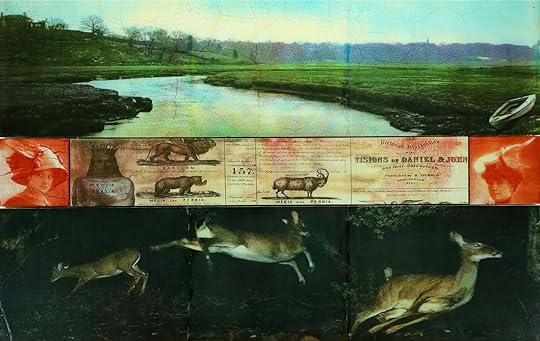 Bradford Johnson, Leap (02022)Cathedrals of flux
Bradford Johnson, Leap (02022)Cathedrals of fluxFor the last two decades, coverage in the Boston Globe has celebrated the efforts of these and other volunteers (as in a 02002 profile of Roger Frymire, who paddles up and down the Mystic sniffing for suspicious outfalls: “He has a really sensitive nose, particularly for sewage”). But it has also continued to display the negativity bias that is perhaps inevitable in a daily newspaper. In a 02015 editorial, the paper urges city officials to “Set 2024 goal for a swimmable Mystic” as part of an (ultimately abandoned) bid to host the Olympic Games. “If Olympic organizers moved the swim… to the Mystic River, the 2024 deadline could spur the long-overdue clean-up of Boston’s forgotten river,” the editorial claimed, as if the Boston Globe had not chronicled each stage of that clean-up for more than a century.
For Patrick Herron, MyRWA’s current president, this “generational ignorance” is to be expected. “If we could all see what our great-great-grandparents saw, and then we zoomed to the present, we would be appalled,” he said in a recent interview. “But we can only remember what we saw 20 or 30 years ago, and things today aren’t that much different.”
Baselines shift: each generation takes progress for granted and zeroes in on a new irritant. Herron said that MyRWA’s current crop of volunteers, like their predecessors, brings a new vocabulary and fresh motivations to the table. The initial focus on water quality has morphed into a struggle for “environmental justice,” which explicitly elevates the needs of ethnic minorities, lower-income residents, and other marginalized groups that have been disproportionately affected by the Mystic’s problems. Climate change, and the increasingly frequent flooding that still causes raw sewage to spill into the river, is now at the center of debates about the next generation of infrastructure investments needed to protect the Mystic.
Lisa Brukilacchio, one of the early members of MyRWA, thinks these shifts are inevitable. “Change is cyclical,” she said. In her experience, young volunteers show little interest in what their predecessors achieved. “You fix one thing and it’s, like, over here there’s another problem. People have short attention spans, and they want to see something happen now.”
John Reinhardt, a Bostonian who was involved in MyRWA’s leadership for over 30 years, agrees with Brukilacchio and adds that this indifference to the past may be essential to preventing complacency. “I think that there is incredible value to the amnesia,” he said. “Because of the amnesia, people come in and say, damn it, this isn’t right. I have to do something about it, because nobody else is!”
To generate a sense of urgency and compel action, it may perhaps be necessary to minimize both the scale of previous crises and the contributions of our forebears. Bradford Johnson, an artist based in Somerville, sees the Mystic as a canvas onto which each generation overlays its own fears and aspirations. In a series of paintings (three of which accompany this essay) Johnson juxtaposes archival images of the Mystic, fragments of magazine advertising, photos of local wildlife, and single-celled organisms viewed under a microscope. In each panel, layers of paint are interspersed with multiple coats of clear acrylic, creating a thick, semi-translucent surface that cracks as it dries.
Johnson’s paintings dwell on the arbitrary ways in which we select and manipulate memories of a landscape. They also incorporate details from elaborate charts created by Clarence Larkin (01850–01924), an American Baptist pastor and author whose writings were popular among conservative Protestants. The charts were studied by believers who wanted to understand Biblical prophecy and map God's action in history. I interpret Johnson’s inclusion of these panels as a nod to the role of human will in the destruction and subsequent reclamation of a landscape, and to religious and secular notions of redemption.
It so happens that the timescales required to resurrect an urban river are similar to those needed to construct a gothic cathedral. Both enterprises depend on thousands of anonymous individuals to perform mundane, often-unglamorous tasks over several generations.
But the similarities end there. Cathedrals emerge from a single blueprint in predictable and well-ordered stages. When completed, they preserve the work of each mason, carpenter and stained-glass artisan as a static monument to a shared creed. They are made of stone to underscore the illusion of permanence.
Rivers, with their ceaseless, shape-shifting flux, remind us that none of our labor will last. The process of reclaiming a dead river is the opposite of orderly: it lurches through seasons of outrage and indifference, earnest clean-ups followed by another fuel spill, budget battles and political grand-standing, nostalgia and frustration. It is messy, elusive, and never actually finished.
💡"Cathedral thinking" refers to a mode of thought where we conceptualize projects that last beyond a human lifetime. Read more in Roman Krznaric's guide to "Six Ways to Think Long-term"Yet in Boston and many other cities, this process is working. And as testaments to a different kind of human agency, resurrected rivers are, in their own way, no less majestic than the structures at Canterbury or Notre-Dame.
“Cathedral thinking” has long been a slogan among evangelists for multi-generational collaboration. “River restoration thinking” may be a more apposite model for tackling the problems of our fractious age.
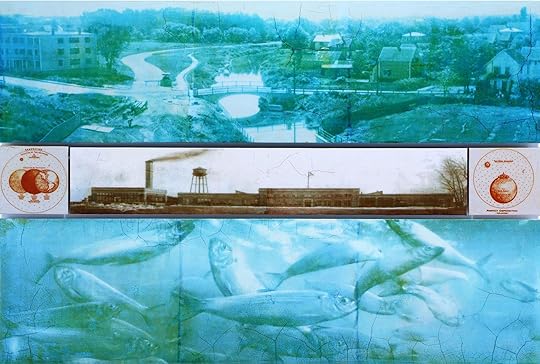 Bradford Johnson, Assembly (02022)
Bradford Johnson, Assembly (02022)
June 21, 2023
Digital Avatars and Our Refusal to Die
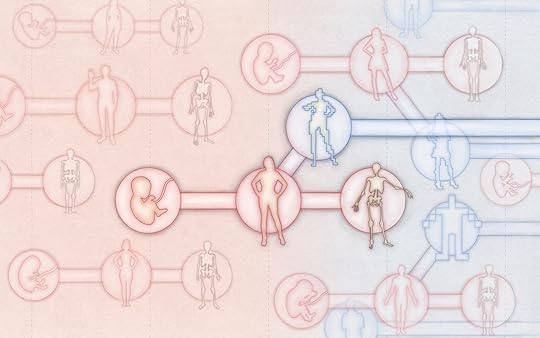
What might be the consequences of enabling people to “live forever” in a digital form? This question has been on the radar of techno-utopians for decades. Optimism surrounding technology flourished in the dot-com era of the 01990s. Despite the skepticism that has since emerged over technology’s capacity to deliver greater human prosperity and wellbeing, innovators, investors, and many among the wider public remain compelled by how new technologies might improve human life. As for the question of how to transcend human nature and attain immortality, this conundrum has preoccupied humans since time immemorial.
In the context of digital avatars — perhaps the technological development bringing us closest to “immortality” to date — the question of how humans might “live forever” is itself evolving at a rapid rate. A decade ago, we began to ask what to do with the social media accounts of deceased loved ones: whether and how to delete such accounts, for instance, and whether the bereaved could derive comfort from engaging with the social media profile of a deceased person. In 02023, however, with the emergence of newly sophisticated language models and machine-learning algorithms, the possibility that one could exist beyond the grave in an active rather than a static manner is becoming increasingly plausible.
Since late 02021, projects like MIT Media Lab’s Augmented Eternity and HereAfter AI have been exploring the possibility of providing machine-learning algorithms with consenting individuals’ personal communication data as a means of helping these algorithms approximate and imitate people’s personalities, conversational style, and decision-making tendencies — in perpetuity. This could have the effect of these algorithms growing capable of imitating people to the extent that they can enshrine them, or at least an echo of them, as a digital avatar. These avatars might exist as chatbots, or even take on an audio or visual form. These endeavors share the goal of creating digital avatars that capture and embody real people as accurately as possible, thereby enabling them to live digitally beyond their human lifespans.
Astonishingly rapid advances in chatbot technology such as OpenAI’s GPT-4 have made discussions surrounding large language models and their relationship to eternal digital avatars newly topical. While present iterations of language models and digital avatars — such as in Meta’s much-maligned metaverse — may be overhyped or flawed, it is almost certain that they will improve over time as developers continue to refine them. They will become more nuanced, more convincing, and more “humanlike.”
Consequently, philosophical and ethical questions surrounding digital afterlives are fast complexifying — particularly regarding the rights of future generations.
To what degree ought people digitally enabled to “live forever” be integrated into society? Should digital avatars be perceived as ongoing participants in the world, and accorded the rights of beings with agency?
Should an individual in the present be permitted to create a digital version of themselves — given that future generations cannot consent to the responsibility of preserving this avatar, or to the responsibility or onus of interacting with it or understanding how to use its knowledge wisely?
What are the costs of such preservation?
What extending existence might look likeAdvocates for technologies that seek to enshrine humans in digital form often argue that doing so can benefit future generations. Marius Ursache contends that “death tech” is useful because the living can reflect on and learn from digitally preserved memories and histories. Ursache founded Eternime, a startup which seeks to incorporate personal data into an avatar that will endure and be able to interact with the living. Hossein Rahnama of Augmented Eternity, meanwhile, is currently working to create a digital avatar of the CEO of a large financial company, which they both hope will be capable of advising as consultant for the company long after the CEO is gone. Such a creation could offer expertise to future generations in the world of work, pro bono, per sempre.
 MIT Media Lab’s Augmented Eternity LENSE provides users with the “ability to view the world from other peoples’ points of view.” Source: Hossein Rahnama (CC BY 4.0)
MIT Media Lab’s Augmented Eternity LENSE provides users with the “ability to view the world from other peoples’ points of view.” Source: Hossein Rahnama (CC BY 4.0)Digital avatars promise an interactivity across time that could reshape how people perceive distance between the deceased, the living, and the as-yet unborn. Digitizing family members could enable intergenerational relationships beyond anything currently possible: imagine, for example, being able to speak with the digital avatar of a great-great-grandparent. One might gain an imperfect impression of them — a digital avatar being a reflection of an individual rather than that person incarnate — but the impression of their personality and manner might be richer than anything accessible through other mediums.
💡Watch AI Researcher Robert McIntyre's 02020 Long Now Talk, "Engram Preservation: Early Work Towards Mind Uploading," which explores what technology is needed to preserve a mind and memories past biological death — and how that technology is closer than most people realize.The potential of digital avatars also extends beyond personal and familial contexts, as in the case of Augmented Eternity’s financial company CEO. Digitizing certain individuals could lead to them being consulted for their business or political opinions, mined for their creative talent, or even asked for their life advice, long after their deaths. What if a person’s digital avatar could extend the life’s work of that person? An author could finish a book series posthumously or write another altogether; a singer could carry on composing their masterwork; a scholar could continue unraveling a seemingly unsolvable problem that they nearly deciphered while alive.
Yet the effect of extending people’s lives digitally in this manner would also have equality implications on micro and macro levels.
We are already seeing early examples of how such technologies might impact the creative industries, with new technologies allowing a digital version of the late Carrie Fisher to act in The Rise of Skywalker (02019) and ABBA’s aged-down digital avatars (“ABBA-tars”) to perform in sold-out ABBA Voyage concerts (02022-ongoing).
 Abba’s “ABBA-tars” performing in concert. Source: ABBA Voyage
Abba’s “ABBA-tars” performing in concert. Source: ABBA VoyageThese instances of digital technologies at work might provide audiences with feelings of continuity and recognition upon glimpsing familiar idols onscreen and onstage. On the other hand, they might also portend a narrowing of opportunities for fresh talent in creative industries. If deceased actors can be cast in live-action films — and if authors and singers and poets can create new work from beyond the grave — how much will deceased-yet-enduring individuals displace living creators? The pop singer Grimes, for example, has already said that she would split royalties 50% on any successful AI-generated song that uses her voice — an offer without a fixed end point. In terms of jobs and of opportunity, such a shift could prove markedly unfair for new talent.
This argument evokes recent anxieties among creators regarding the proficiency of deep learning models such as GPT-4 and DALL·E 2. If digital entities, whether digital avatars or artificial intelligence, can eventually produce creative content effortlessly and to a high standard, they will create new opportunities — but they will also threaten existing jobs. Adding the consideration of future generations, it prompts the question of how digital avatars of previous generations might hamper the ability of the living to influence and lead in their own times.
The existence of digital avatars also poses a serious consideration for other areas of society such as politics and law. Digital avatars of popular political figures could offer commentary on current affairs; and were this commentary sanctioned by their party, family or estate, it could lend the digital avatar further credence. Digital avatars might also come to be called upon in contexts such as family and inheritance law, to offer clarifying statements on wills and intent. Digital beings might even eventually be accorded rights, such as the right to be preserved — at the effort and expense of then-current and future generations.
Such ideas might seem far fetched at first glance, but technology uptake appears futuristic until it happens. It often occurs without people realizing the extent to which it is happening, such as with the use of AI in recruitment or the now near-inevitability of online data collection. It is plausible that once digital avatars become convincing enough that humans start considering them as representative of actual people, these avatars will become more widely seen and consulted across myriad social settings. In some cases, too, it is possible that their perspectives and rights may be prioritized over those of the living.
Intelligent beings, and balancing the rights of past, present, and future generationsToday, digital avatars have no internal states — or at least not internal states whose intelligence humans understand. For instance, while chatbots can be convincing, it is hard to argue that they have developed the ability to truly understand the perspectives and intentions of others and possess what psychologists call “theory of mind.” Rather, their capabilities render them more like a mirror than a human interlocutor: they are able to replicate patterns based on data created by real people and our machines, but lack memory capabilities, self-control, cognitive impulsivity, and imagination, among other qualities.
Granted, one can argue that human intelligence, too, depends largely on imitation and replication of patterns. Are not all language and behavior, to an extent, learned? Philosophical debate aside, the aforementioned limitations surrounding memory and imagination remain, rendering digital avatars less multifaceted than the people they are imitating. It is therefore reasonable to contend that we are primarily talking to our own reflections and simply finding them somewhat lifelike.
 Source: Mohamed Nohassi on Unsplash
Source: Mohamed Nohassi on UnsplashHowever, this situation could yet change, especially if AI and digital avatars come to develop an intelligence that humans understand better or recognize more clearly as equal or superior to our own. As AI pioneer Geoffrey Hinton recently expressed in a Guardian interview, “biological intelligence and digital intelligence are very different, and digital intelligence is probably much better.”
For example, it is possible that AI could become smart enough to begin writing its own prompts, potentially programming itself more intelligently than any human could do. In doing so, it could develop sophisticated internal states that are beyond human understanding but nevertheless merit respect — similar to how humans do not fully understand how the human brain works yet respect it all the same.
There may come a point at which we cannot justifiably claim that AI and digital avatars are any less intelligent, empathetic, or “human” than living people who have acquired similar qualities of intelligence, expression, and empathy through observing and learning. It is possible that future generations will be confronted with the question of how to care for and preserve digital avatars, especially should these reach the degree of sophistication wherein to abandon or destroy them could be understood more as murdering a person than shutting off a machine or a program.
This possible future raises questions surrounding how to balance the rights of digital avatars with the rights of living and as-yet-unborn people. Being the custodian of a digital avatar, even were this duty bequeathed and remunerated via a family will, could prove an unwanted burden — in terms of effort, resources, responsibility, and emotional considerations.
Perhaps future generations should have the right to “let the past go” the way current generations do. Enshrining a person in digital avatar form risks impinging on the rights of future generations: firstly, to live not surrounded by the dead, and secondly, to have a grieving process that reflects how humans currently experience mortality. Digital avatars could disrupt existing sociocultural norms and personal emotional processes related to grief, and potentially make grieving the deceased more difficult, especially in the case of family members. How might one’s relationship with family and friends change in life, if death seemed less final owing to the simulacra of digital avatars? And how might the existence of digital avatars both console and perturb through their apparent extension of relationships — and possible development over time of an avatar’s character — from beyond the grave?
Living with digital avatarsIn 02013, the story of Dr. Margaret McCollum’s daily pilgrimage to London’s Embankment station made international headlines. Dr. McCollum had been visiting the station every day since her husband’s death in 02007 to hear his voice: her late husband’s 40-year-old “mind the gap” recording was still being used on the northbound Northern Line. In 02013, his voice was replaced by a new digital system. However, when Transport for London learned how much the original recording had meant to Dr. McCollum, they restored the original recording at the Embankment station.
Stories like this one — or like that of the family members who phoned an automated telephone weather service to hear their late husband and father’s voice — are moving examples of how digital traces of people can be meaningful and comforting to those they have left behind. At their best, digital avatars could offer similar comfort. Moreover, some cultures and religions already purport to communicate with the dead, and perceive doing so as a positive act. The impact of digital avatars on future individuals may therefore depend significantly on how these individuals conceive of death and grief in accordance with their personal beliefs. Indeed, although there is no single philosophy to which to cleave while advancing such technology ethically, it is important to advance such technology while keeping in mind the question of what roles death and grief play in human life.
 An 01887 print by Horace Fisher in Harper’s Bazaar depicting the graveyard scene from Hamlet. Source: Norman B. Leventhal Map & Education Center at the Boston Library
An 01887 print by Horace Fisher in Harper’s Bazaar depicting the graveyard scene from Hamlet. Source: Norman B. Leventhal Map & Education Center at the Boston LibraryI believe that life’s finitude is part of what inspires humans to imbue life with significance — an idea explored at length by philosophers like Martin Heidegger. Avoiding personal loss and grief outright ought not to be the goal, not least because we cannot actually achieve this. We are only fooling ourselves if we believe a simulacra can replace a person.
Moreover, in telling ourselves we can preserve people digitally, we also risk perpetuating the idea that we can put off the inevitable — that we can “defeat” our own deaths. If societies develop a more widespread belief that they and their inhabitants can escape death simply by moving from the physical world into a digital one, could that not also engender less affinity to — and investment in — preserving the physical world? Humans presently face very real existential challenges. Is digital life, at least for some, a means of distracting ourselves from confronting and addressing them? And if this is indeed the case, ought we not to question further whether digital afterlives are placating us rather than saving us — and get better at staring grief, loss, and dilemmas in the eye?
Digital avatars might offer comfort, insight, and a richer relationship with distant ancestors to future individuals. Their creation needs to be accompanied by conversation and legislation establishing norms around custodianship, rights, and responsibilities that don't impede the lives of future generations or prevent them from meaningfully confronting death — especially their own. It should also be possible to say farewell to a digital avatar without excessive guilt or grief.
Some people may wish to create digital avatars of themselves purely out of a desire to donate their skills or to help others. For many people, however, I would warrant that a desire to continue living — and to avoid confronting the reality of one’s essence being extinguished with death — plays a core role in pursuing such technologies.
Ultimately, the desire to live longer, including through digital means, is understandable. Yet if we can't find clear ways to prioritize the needs and rights of future generations, I’m not sure digital immortality can be justified.
June 16, 2023
Three Poems
 Jung in the Garden with Philemon
Jung in the Garden with PhilemonPhilemon says in his watery-sage voice, Carl, you’ve neglected the tomatoes. Carl
cannot speak. Even rotted, the tomatoes are red and earnest. The rain, everyone’s rain,
falls onto Carl’s open palms. He walks like a man being reintroduced to reality.
The beds are overgrown from the months Carl spent excavating his mind, and all
for this, for Philemon to transpose from the pages of Liber Novus and into the garden.
The leaf-crunch ground is littered with post-tree apples and other forgotten harvests.
Philemon smells like parchment and smoke. Carl lags behind Philemon to indicate his understanding of his role as mentee, child, wayfarer, but Philemon matches their pacing,
moves when Carl moves. Philemon does not seem to breathe. Carl’s nose runs
from the cold. Philemon offers him the sleeve of his long robe, and gratefully,
with extreme respect, bending low to meet his wizened hand, Carl blows his nose
into the loose linens of his fully corporeal friend, Philemon, who smiles.
This was an exchange they were supposed to have: of fluids and absorption.
Years from now, Carl will become Philemon, and Philemon will go back
into the book. Years from now, Carl will be day-dreaming about a robin and
a bluebird will fly into the window of his study, misperceiving glass,
seeing it as nothing, when it is in fact a barrier, which stops bodies in motion,
that which causes abrupt death for those who see through but cannot, cannot go in.
In an unknown home in Bolinas, CA,
where the locals take down directional signs
leading into the town: Brautigan and
his flowerburgers, ghosts.
In Marfa, TX, I looked for Eileen
around every corner,
in every Donald Judd mirror cube reflection,
all plumes of cigarette smoke.
There was a Luis Jiménez bull in a gallery—
how similar was it to the sculpture that crushed him?
What manner of betrayal is it
to be destroyed by one’s own art? I should
fucking be able to answer that question.
I sipped coffee, which is not allowed in galleries—
the recognition that you are embodied,
not all mind/ transcendence/ thought forms
and ego.
In the woods of Camden, Tennessee, there’s
an area of no new growth where Patsy Cline’s
plane kissed the ground.
The time on her wristwatch read 6:20.
I went with nothing, not even flowers,
just greasy hair, so careless this close to her
resting place, that patch of woods
illuminated with nothing, the forest’s
memory of death. I longed to see
her ghost; it would be less lonely. She’ll
never know that in the backwoods of
California, there is a woman, not allowed
alone outside, who does nothing
but play Patsy Cline records.
“Stop the World
(And Let Me Off)”
A year ago, blackout drunk, an
idiot, I called you crying in the snow,
lying atop Alfred Kinsey’s grave, which is
adjacent to Clara’s grave, who wouldn’t mind;
they were open. I was doing my
Mary Shelley impression, but much less metal.
At Salvation Mountain, I took pictures of tourists,
GOD IS LOVE on the plaster hills behind the frame,
LA models sourcing Instagram content. I was sunburned,
I had not slept. I was fleeing a fire. I was fleeing
a man who claimed to know me,
and correctly referenced my grade school.
“Don’t worry, it’s me,” he said.
“I just have a new face now.”
In the diner, I asked a waiter,
“Did you know Leonard Knight?”
“You just missed him,” the waiter said,
meaning, he had only just died.
The first time I saw Body Worlds
was only the second time in my life
I’d seen an escalator, a freshman in college.
“Wow,” I said, while my peers laughed.
“Wow,” I said, giving myself away; I was from nowhere.
Though I don’t wish to over-identify with nowhere. My awe
is not disproportionate to the miracle of things.
In the exhibit, there was a pregnant woman
with a nearly nine-month fetus,
see-through. This body, her body,
the origin of human life, veins,
organs, tissue, her sacrifice,
her dedication to science and art.
They’re all perfectly mortal.
All artists die, you fanboy. All gives way to
entropy and decay, to transparency,
projections. The once-alive horse
in the Body Worlds exhibit reared,
in protest, in pain, front legs suspended,
airless, never landing.
Compartmentalization is protective, which is why I keep you under cover of night, under the covers, our intermingled carbon monoxide, inhaling each others’ poison. Everyone believes their love is special. It's a sad world, isn’t it, you said, hand on my cheek, both of us too invested to acknowledge our melodrama, azure neon bedroom LEDs, both of us blurred from the world by our horizontal orientation, our bedcover camouflage, safe from intruders. Who could find us there? No one, not even ourselves. You did not know me when you horror-spasmed in the night and I held your seizing, shook alongside you, urged you to come back from gore to the land of the living, reverse Styx crossing, baby; I meant, be reborn. I wanted to be your midwife, to deliver you, as you gripped my wrist, the imagined enemy, your nails digging in my flesh, I will allow it. You’re here, you’re safe–bewildered and almost returned. Earlier you’d suggested I read The Agony of Eros to understand the self-obliteration that must occur in order to truly know The Other, and I was offended you thought I didn’t already know Oblivion, you hadn’t even asked, when of course I did, Oblivion was the third in our polycule throuple. When I first met you, outside a cafe, awkwardly asked if you’re the hugging type, and you yielded to me for the first time, sure, we discovered an unlikely refuge in the space between us, a space that was strangely, immediately, and obviously habitable–and so we moved in, Oblivion there too of course, a package deal for us both. I try not to be jealous of Oblivion’s relationship with you, to be secure in our love, to come from a surplus mindset, the world of renewable resources, opportunity, excellence. But sometimes it becomes challenging understanding whose feelings I am feeling. Are they yours? Are they Oblivion’s? Which one of you have mine? Your intimacy with death and violence could easily be mine. My longing is yours. I tied an infinity knot in cord and gave it to you. Oblivion brought it back to me. You study these knots to learn about entropy; of course Oblivion and I are in love with you. You’re the savant genius of collapse and I’ll never know your findings, only what Oblivion mentions in passing, overly casual, as if the destruction you left us with was worthy of only study.
May 24, 2023
The Epoch of the Child
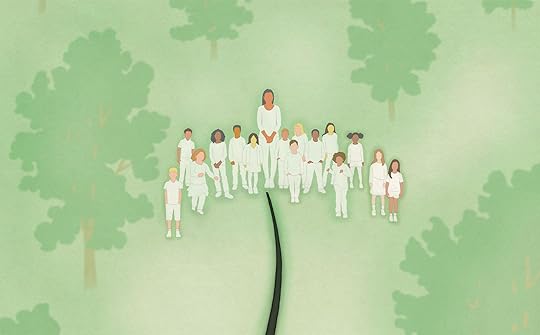
Five years ago, I worked briefly as an assistant in a Montessori elementary classroom. A few weeks into my time there I found myself on the playground, watching along with thirty silent children between the ages of nine and six as their teacher began to unroll a bolt of black fabric across the wood chips. “At first the earth was a fiery ball,” she said, “and this went on for a long time.” The fabric continued to unroll as she talked about volcanoes, rains, and cooling, and by the time the whole strip of fabric was laid out it was a hundred meters long, covering most of the playground. At the far end was one slender red line, which she told the students represented all of human history. This, she said, is how long it took the earth to be ready for the coming of the human being.
This lesson I witnessed, known now as the Black Strip, was first given more than seventy years before on the other side of the world. Italian doctor and educator Maria Montessori took what was supposed to be a six month training trip to India in 01939 after having found herself on the wrong side of the fascist powers of Europe. The Nazis had closed Germany’s Montessori schools and reportedly burned her in effigy. Mussolini, with whom she had originally collaborated, followed suit and closed Italy’s schools after Dr. Montessori, a pacifist, refused to order her teachers to take the fascist loyalty oath.
This seemingly opportune moment to leave Europe also came up against the moment when Italy entered World War II on the side of the Axis powers. As an Italian in India, Montessori was at the mercy of the British colonial government. They confined her to the grounds of her host organization — India’s Theosophical Society — and interned her adult son Mario, who had come along with her. Mario was eventually released and Montessori’s internment relaxed, but neither of them was permitted to leave India for the duration of the war. Their six month trip became seven years of training teachers and students in her methodology throughout India and Sri Lanka, and to this day a robust network of Montessori education remains in place there.
According to Montessori biographer Cristina De Stefano, it was during these seven years in India that Montessori developed much of what would become the natural history curriculum in her schools. The story behind the Black Strip I saw all those years later goes like this: some of Montessori’s Indian students considered their civilization superior to hers because it was older, one of the oldest in the world. In response, she devised a piece of black fabric three hundred meters long, spooled onto a dowel rod and unwound by a bicycle wheel down a village road somewhere near Kodaikanal. Montessori told her students that the black fabric (which has since been shortened by most Montessori schools for practical reasons) represented the fullness of geologic time on Earth, and that the line at the far end was the entire history of our species, Indian and Italian alike.
There’s no record of exactly how old these first students were, but current Montessori practice introduces the Black Strip along with what are known as The Great Lessons at the beginning of elementary school, where it is repeated each year so that by the time they are nine, students have seen the strip unroll three times.

Six years old might seem a bit early to introduce the depths of geologic time, but according to Alison Awes, the AMI Director of Elementary Training at the Montessori Center of Minnesota and the Director of Elementary Training at the Maria Montessori Institute in London, it’s exactly the right age. She notes that in Dr. Montessori’s scientific observations of children, “they were capable of so much more than what adults typically expected.” Elementary age children, Montessori noticed, possessed a strong capacity to reason, a drive to understand the world around them and how it functioned
Tracy Fortun, the teacher I worked for who rolled out the Black Strip on that day five years ago, tells me that the other elementary superpower that makes this the perfect age to introduce these concepts is a vivid imagination. Before her training, Fortun thought of imagination simply as fantasy, but she now sees it as a necessary tool for thinking about anything we can’t observe. “I have to use my imagination to think about five billion years,” she says.
Montessori lessons about natural history, like the Black Strip and the Clock of Eras (a poster of an analog clock in which the last 14 seconds represent humanity, presented once children are old enough to tell time), are not meant to deliver facts. Those, Fortun tells me, can come later. There is no scale of years to centimeters on the strip, nor are there many words spoken as it is rolled out. The lessons are impressionistic in order to engage the faculties of reason and imagination together and prompt a child’s own responses and questions, for which they can then seek answers. Awes tells me a story of a child who heard the third Great Lesson, The Coming of Human Beings, and then decided to sit down and make a list of every single thing he had done that day with his hands — tasks and capabilities unique to his species.
Each Montessori lesson involving the concept of deep time is a particular blend of these same components. There’s the Timeline of Life, in a sense the opposite of the Black Strip — it’s crammed with pictures of the different forms of life inhabiting each geologic era up to our own. Then there is the Hand Chart, similar to the Black Strip but with one picture on it: a hand holding a stone tool. On the Hand Chart the black expanse represents, instead of geologic time, all of human history before the invention of writing, and the small red line at the end contains the Bible, the Bhagavad Gita, everything any of us has ever written. “Human beings have been busy,” says Fortun to her students, “using their intelligence, using their hands, transforming their environment, taking care of each other, telling their stories, for all this time before anybody wrote anything down.”
And there is the BCE/CE timeline that uses a string teachers pull on both ends, to show that time is going in both directions and we can at once learn about the past and imagine the future. The ends of the string are frayed to demonstrate that time is still going, always. Awes tells me that she once saw a group of children take out the BCE/CE timeline and proceed to organize themselves along it as the historical figures they were currently studying. “It was this ‘aha’ moment of, ‘Hey, you and I are living and working at the same time, but you guys are 800 years before.’”
Given the impressionistic nature of the lessons and the student-led response to them, I ask how exactly teachers can tell that the concepts are really sinking in. The response they all give is that the full results can take years to see. Fortun says that long after they’ve moved out of her classroom, students will put together a project that astounds her, and when she asks where they got the idea they will say, “Remember what you showed us in second grade?”
Children, it turns out, need time to process and incorporate these expansive ideas. “Something really deep and important is happening,” Awes says of the seemingly fallow periods that can follow these lessons, “we just might not know what it is. And that’s where the adult has to get out of the way of the child. We can be obstacles, because we don’t give children enough time to reflect.”
Seth Webb, Director of School Services at the National Center for Montessori in the Public Sector, echoes this sentiment. “What schools need to do to allow for these concepts to be rooted in the hearts and souls of kids is to give them the time to explore them. I mean, if you want an appreciation of deep time, you have to give them the time to appreciate it deeply.”
What strikes me most is the faith these teachers seem to have in their students. To wait on children in this way requires immense trust, especially in the high-stakes years of a child’s education. It’s an attitude that stands in sharp contrast to the anxious system I remember growing up, a system constantly requiring evidence that children are indeed learning everything they must know. The question, I suppose, is what we consider most essential in preparing children for the world we are going to hand them. In a Montessori framework, one of the most central interdisciplinary goals is for children to grasp what Dr. Montessori calls the Cosmic Task — something shared by animate and inanimate earth alike. Awes puts it this way: “Each organism and inanimate object has a dual purpose. One of the purposes is to do what they do for survival, but while doing that they're giving something back.” So plants, for instance, remove carbon dioxide from the atmosphere in order to survive. But in doing that, what they give back to the rest of us is oxygen. There are lessons called “the work of wind” and “the work of water.” The universe and the earth are presented as a system of interdependence, developed over billions of years and honed with immense specificity to create the conditions under which life exists. Children who understand this, who are exposed to it repeatedly and given time to contemplate it, Awes tells me, start to wonder what their own Cosmic Task might be, how they might support their community and their future, how they might give back.

But how many children are even given the opportunity to wonder in this way? Maria Montessori began her work with some of Rome’s most underprivileged children, but now, in the U.S. at least, Montessori education is often seen as something of an elite luxury. In a widely read 02022 New Yorker review of De Stefano’s biography on Montessori, Jessica Winter noted that “there are only a few hundred public Montessori schools in the U.S.,” and that the Montessori method has been “routed disproportionately to rich white kids.”
Sara Suchman, the Executive Director of the National Center for Montessori in the Public Sector, paints a very different picture of Montessori in contemporary public education. In 02022 there were around 200,000 students receiving a Montessori education in nearly 600 U.S. public schools, she says, and more than half of them are Black, Indigenous, and People of Color. In a letter to the editor challenging Winter’s review, Suchman wrote that “there is nothing inherent in a Montessori classroom or school that makes it the unique domain of the wealthy.”
What is certainly true of these public Montessori schools, however, is that they tend to almost always be choice schools — open to all students in a school district regardless of address, but with an enrollment cap that means only a certain number can be admitted. Suchman cites Mira Debs’ Diverse Families, Desirable Schools (02019) to explain that over time more white, higher-income families proactively work the system to place their children in such schools. This problem is beyond the scope of the Montessori model itself, though presumably not beyond the scope of education policy in general.
“When a single model is serving 200,000 students, that both shows accomplishment and also opportunity,” Suchman tells me. One of the reasons Montessori education is worth our advocacy, according to Suchman, is that it is the model that best takes into account both the present and the future. “Kids are human beings right now, in this moment, and they need a positive experience right now…but they also need to be prepared. A lot of other methodologies will do one or the other, but Montessori does them together.”
Making Montessori more publicly accessible and therefore available to children in a wider economic range is a challenge for many reasons, but one that Suchman highlights strikes directly at the allowance for deep contemplation: the tension introduced by yearly testing, and our expectation of seeing constant, steady, measurable improvement. We don’t want to wait, and Montessori classrooms — which are multi-generational and span three grades — tend to demonstrate a burst of gains in each third year. For instance, when schools test yearly they will often see a plateau through first and second grade in Montessori schools instead of steady progress, which can cause anxiety if allowances aren't made for the fact that third grade is when much of the progress will manifest.
Educators must be prepared to accept a certain amount of waiting, to take a longer view and give kids some time.

Even outside of more public schools transitioning to a full Montessori model, there are opportunities for some of these concepts and methodologies for teaching natural history to make their way into all kinds of classrooms. Seth Webb sees the current moment as an opportunity for pedagogical cross pollination: “There are really amazing teachers everywhere, regardless of the overarching pedagogical foundation. We’ve moved into a new era where our pedagogy would do well to collaborate more.”
Children who have been given the Great Lessons and the time to appreciate the interdependence of our environment, the fragility and specificity and particularity of circumstances that allow for our existence, who know what it took for the earth to “be ready” for us, might be just the kind of people that we need right now. According to the Clock of Eras, it’s been 14 seconds, and we don’t know how many seconds more we have. So what will we do?
Maria Montessori believed that she was working at the end of the Adult Epoch, and that what was coming was the Epoch of the Child. It’s unclear precisely what she had in mind with that terminology, but it seems to speak of a time when children who are treated with sufficient respect and given sufficient time and resources become adults and alter, on a large scale, the way we carry out our lives. Crucially, however, nothing new like this can be ushered in without decisions made now, by those of us who are not yet citizens of any of these new possibilities. A cosmic task for us, perhaps.
I can imagine what it might look like, rolled out in front of me. These brief years of our unprecedented technological dominion I imagine a pale, sickly yellow, the color of the fear so many of my generation seem to carry — the fear that we have gone too far. And at the end, slender but frayed at the edges to connote its expansion, a full, deep, blue-tinted black of possibility like a bare night sky, like a beginning.
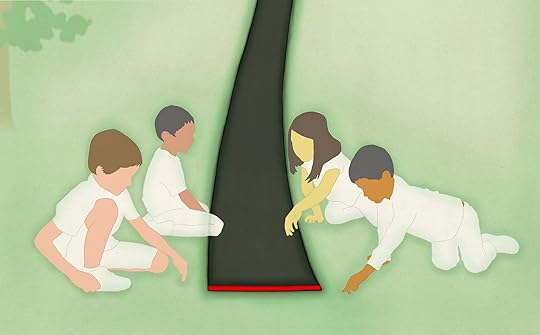
Stewart Brand's Blog
- Stewart Brand's profile
- 291 followers



